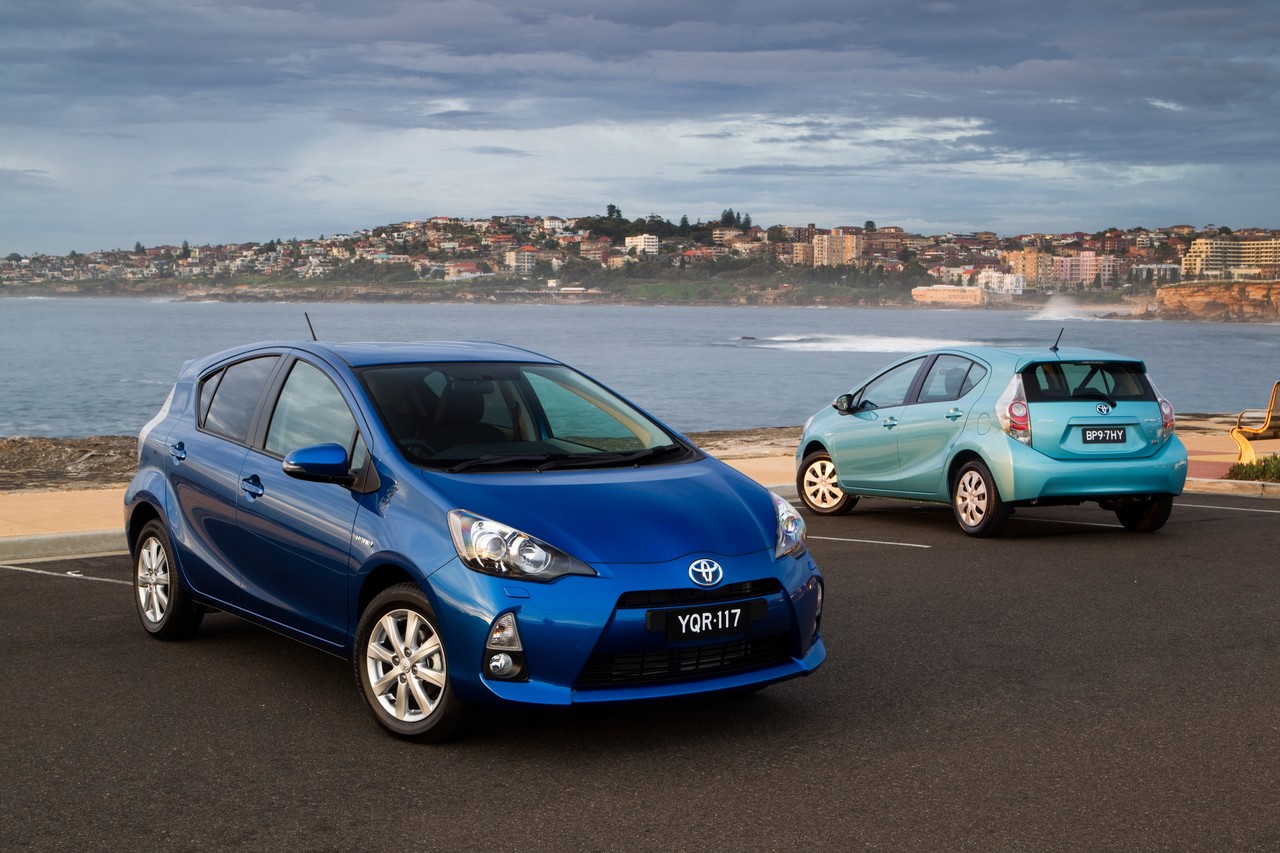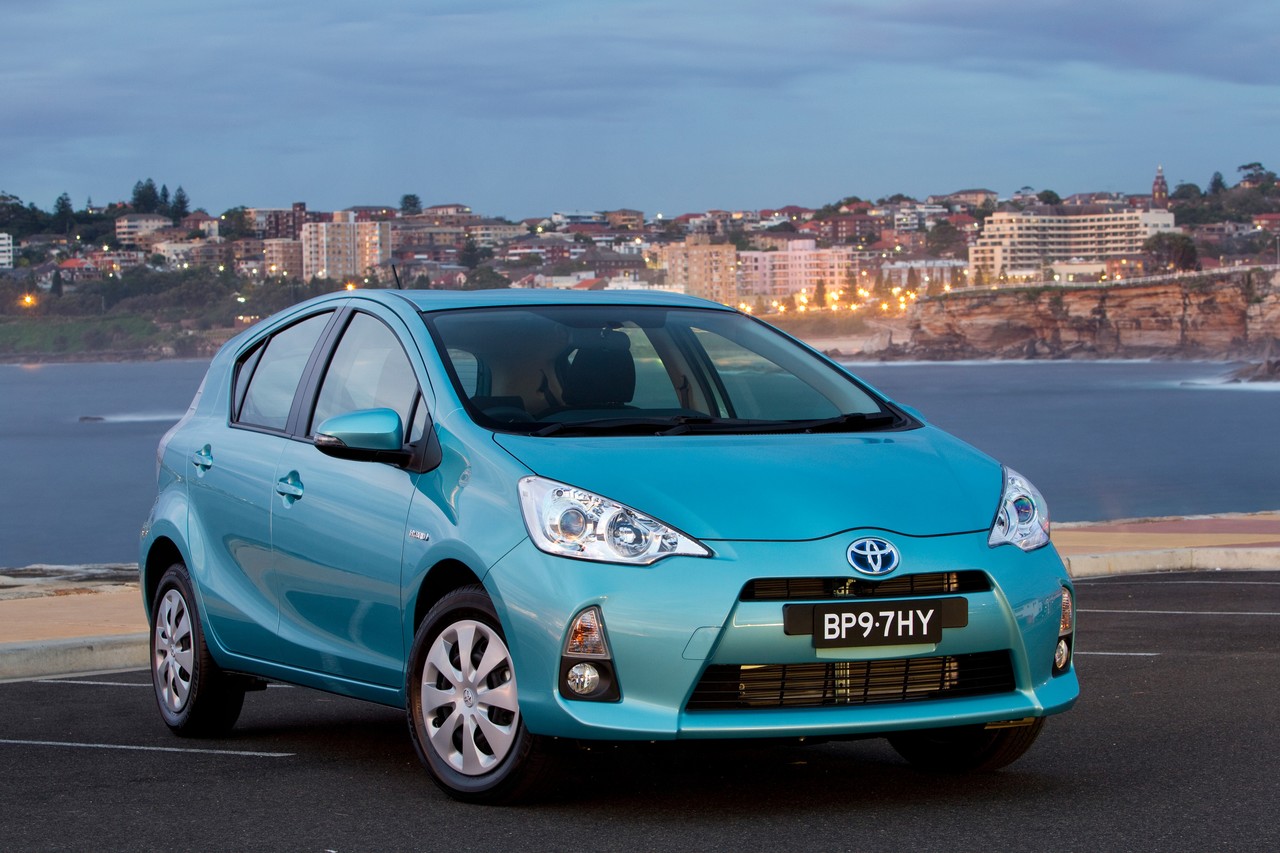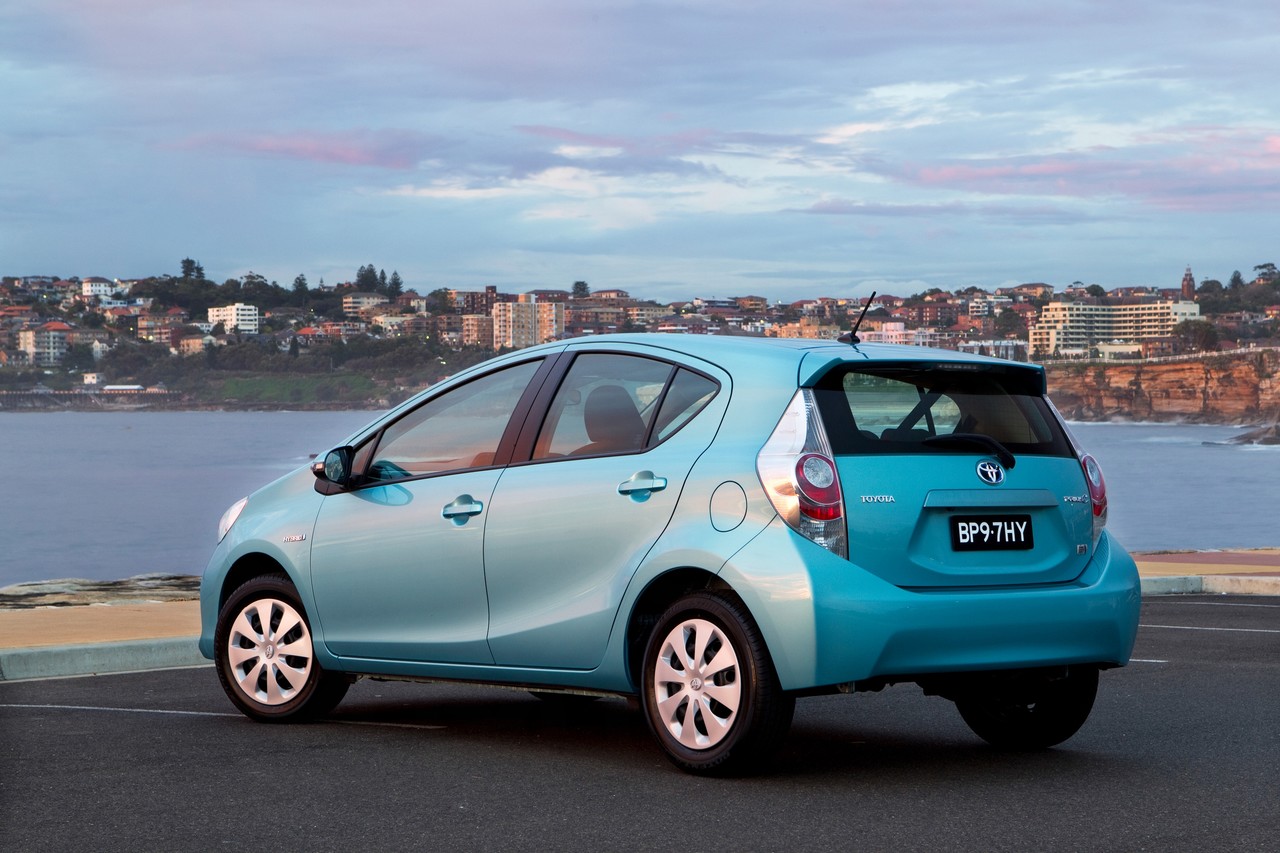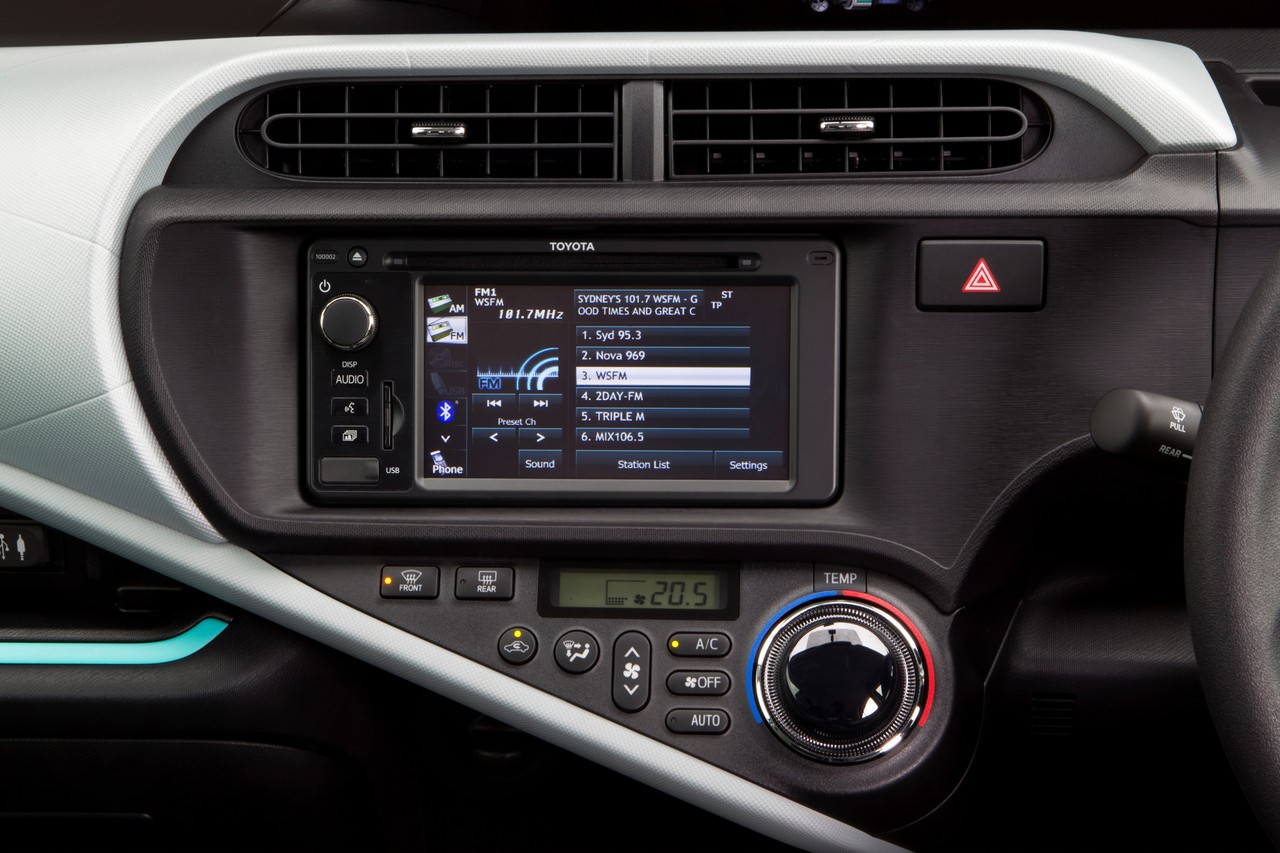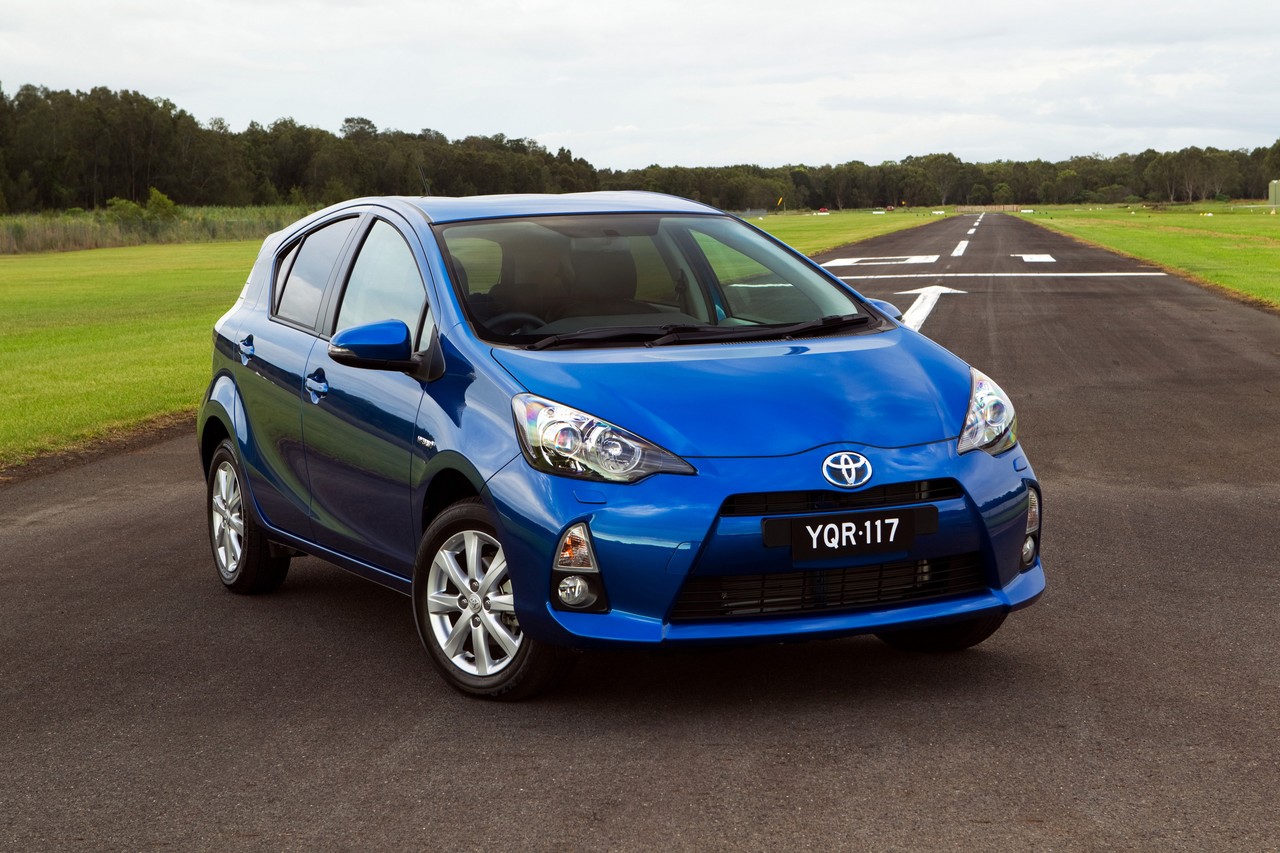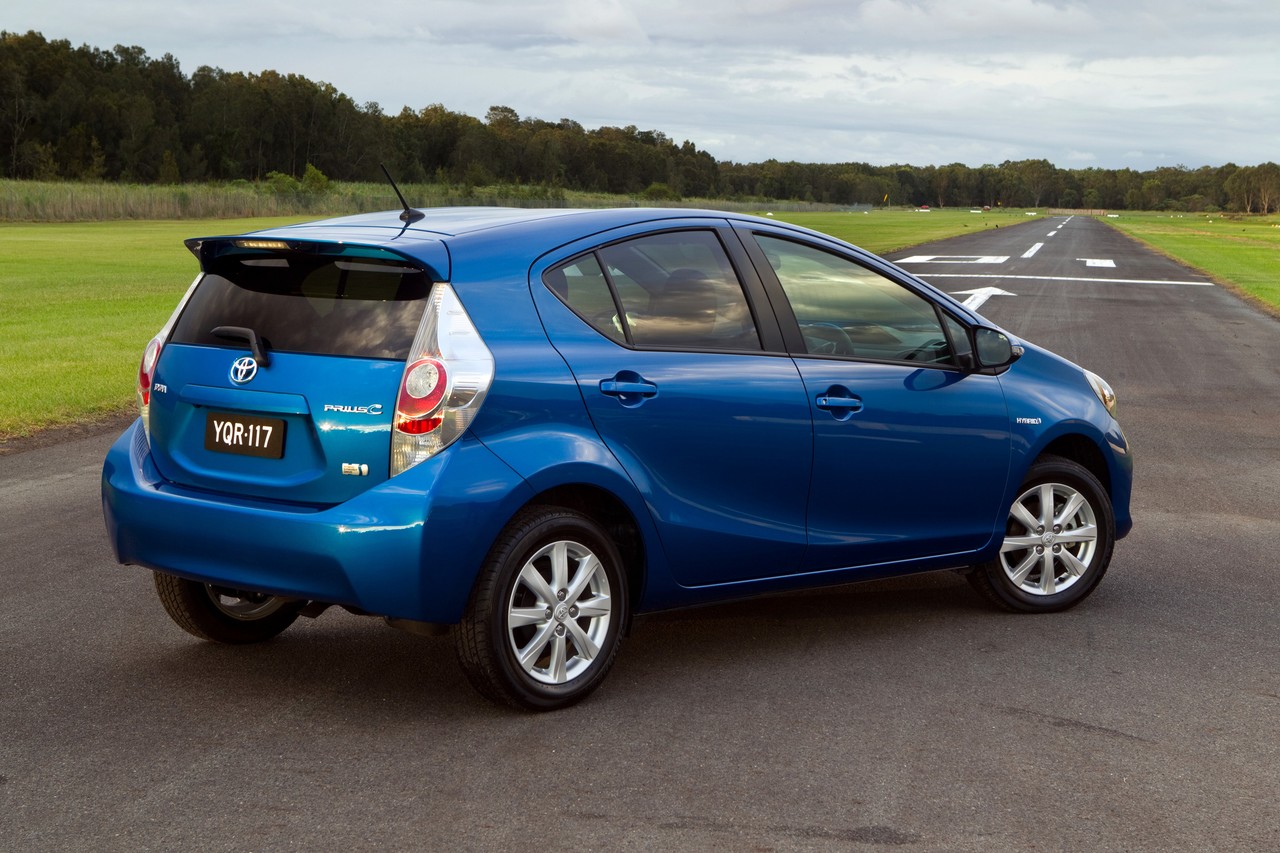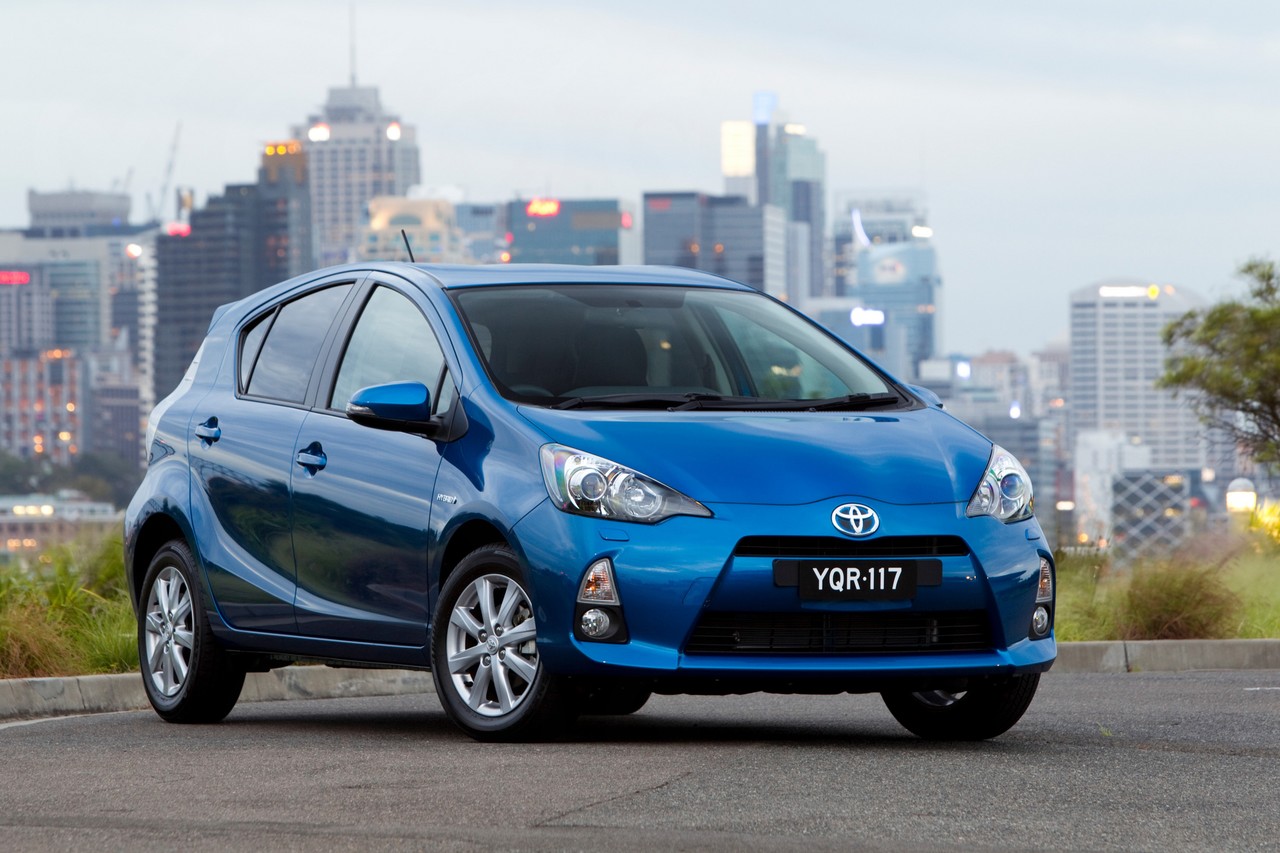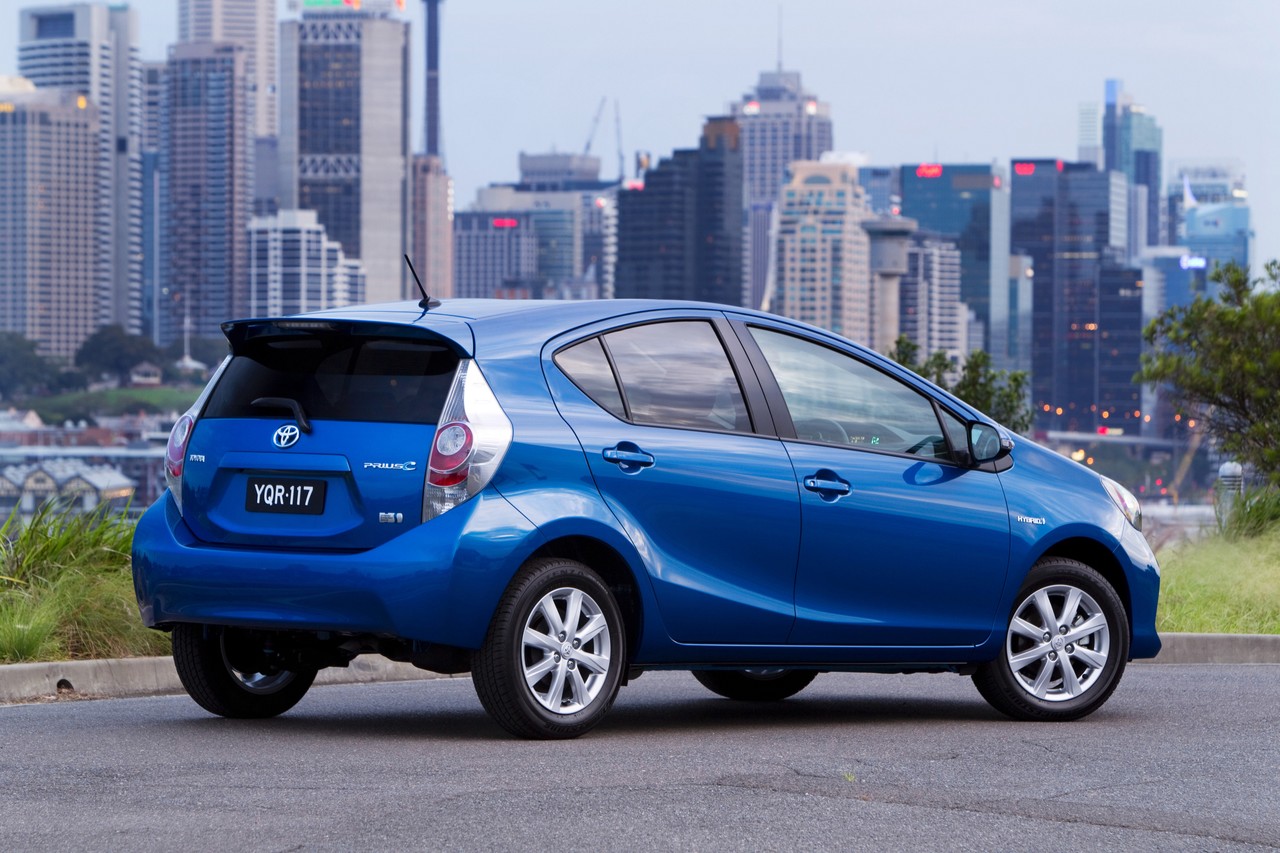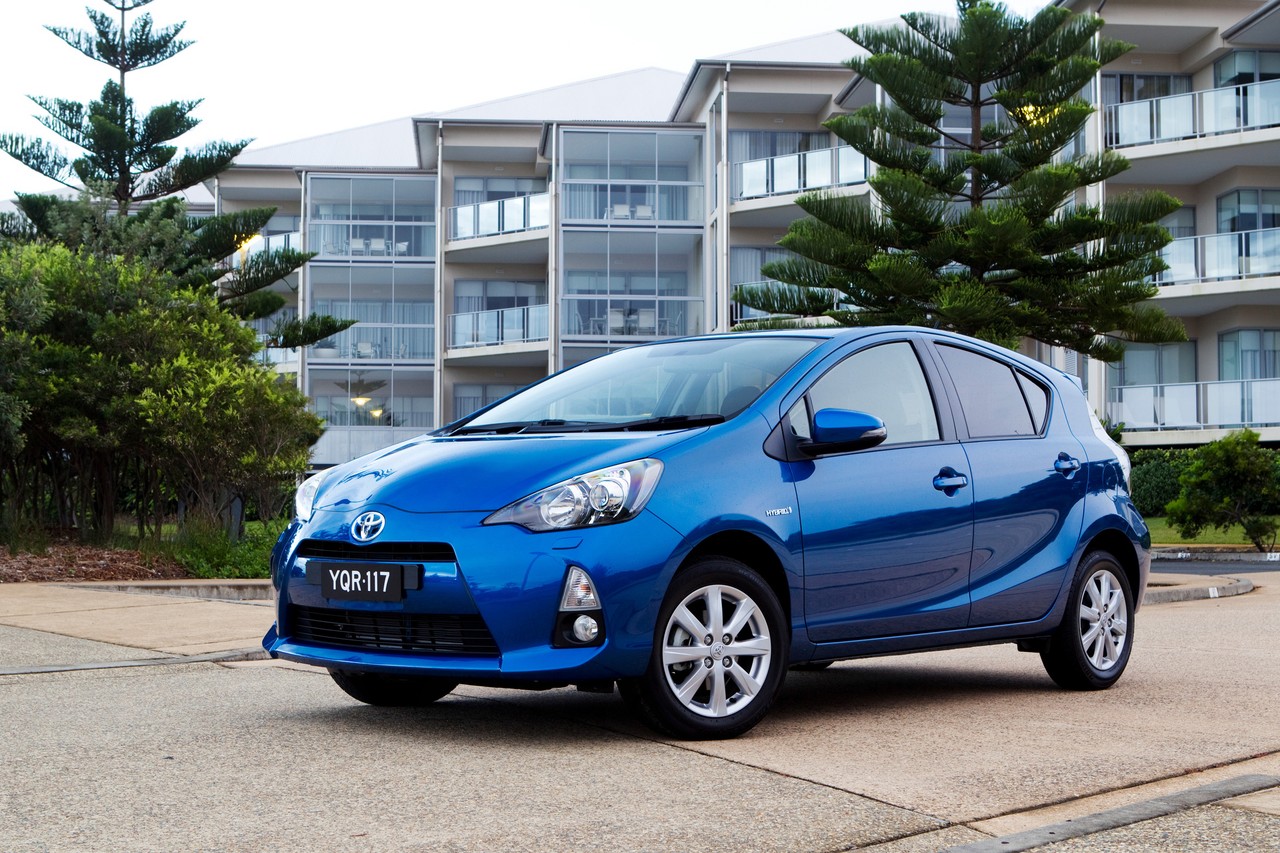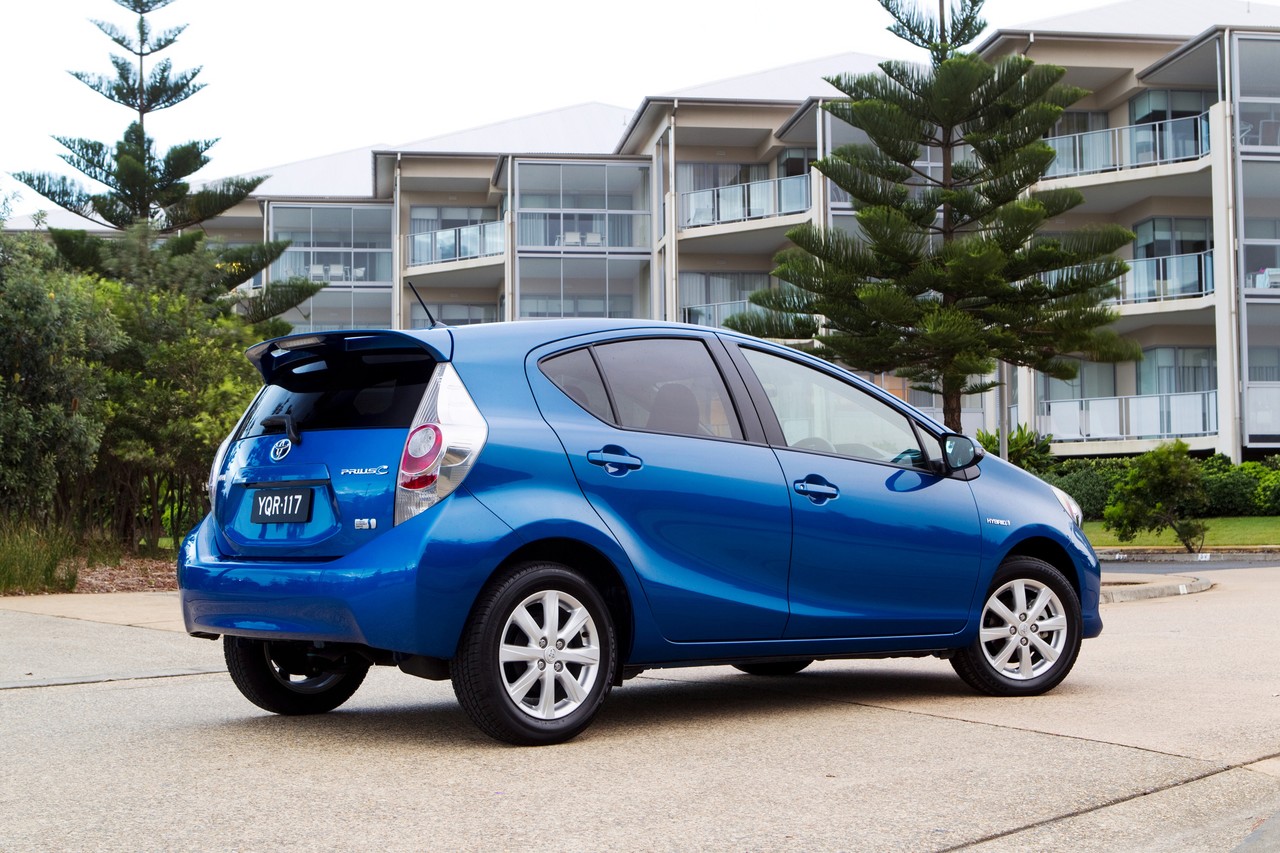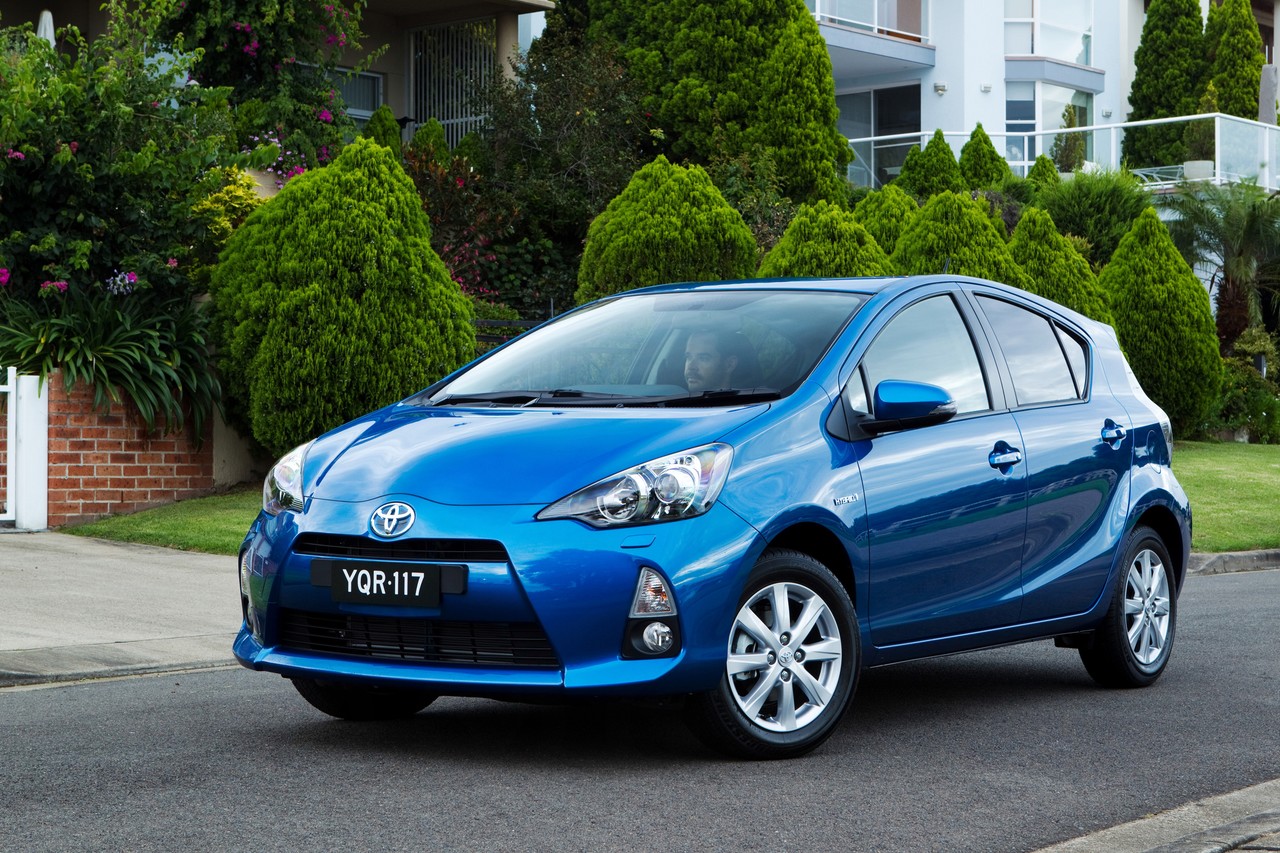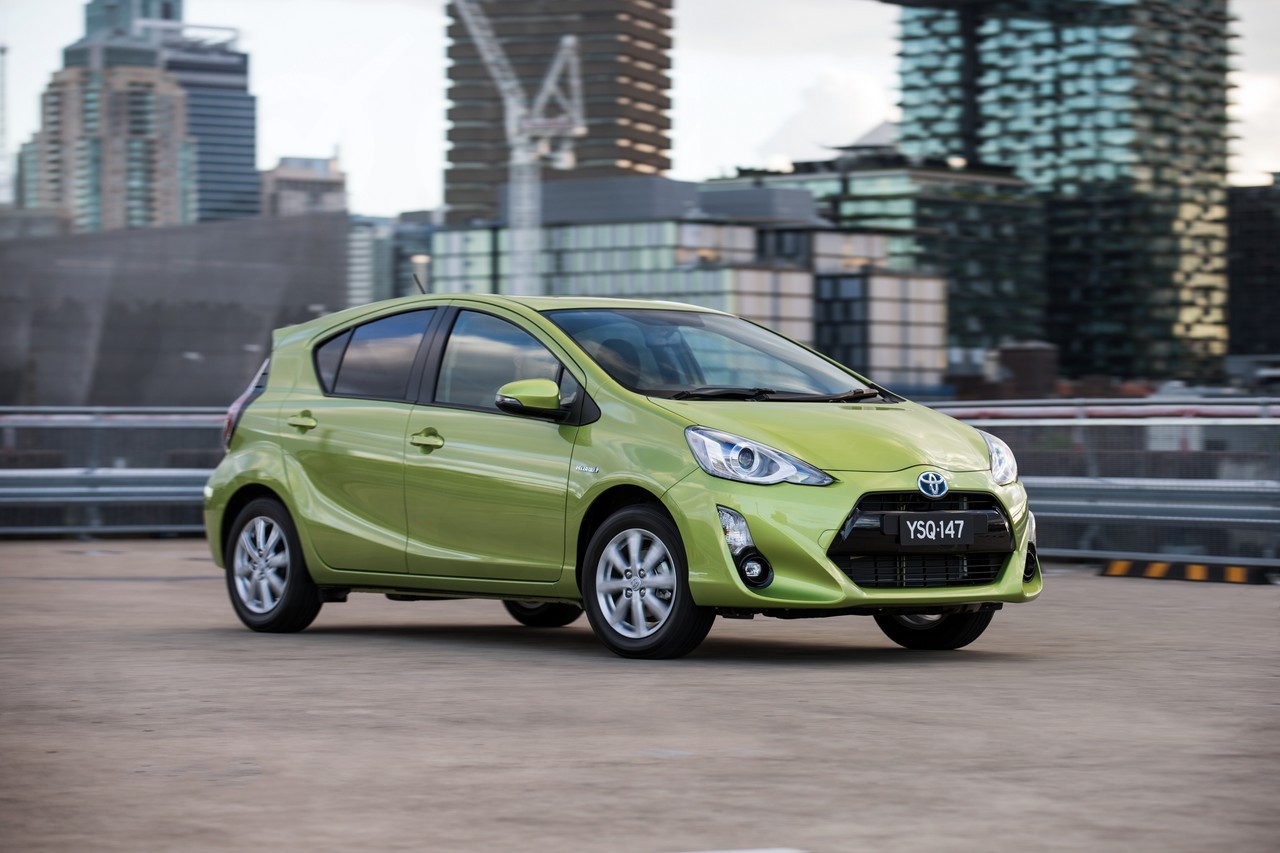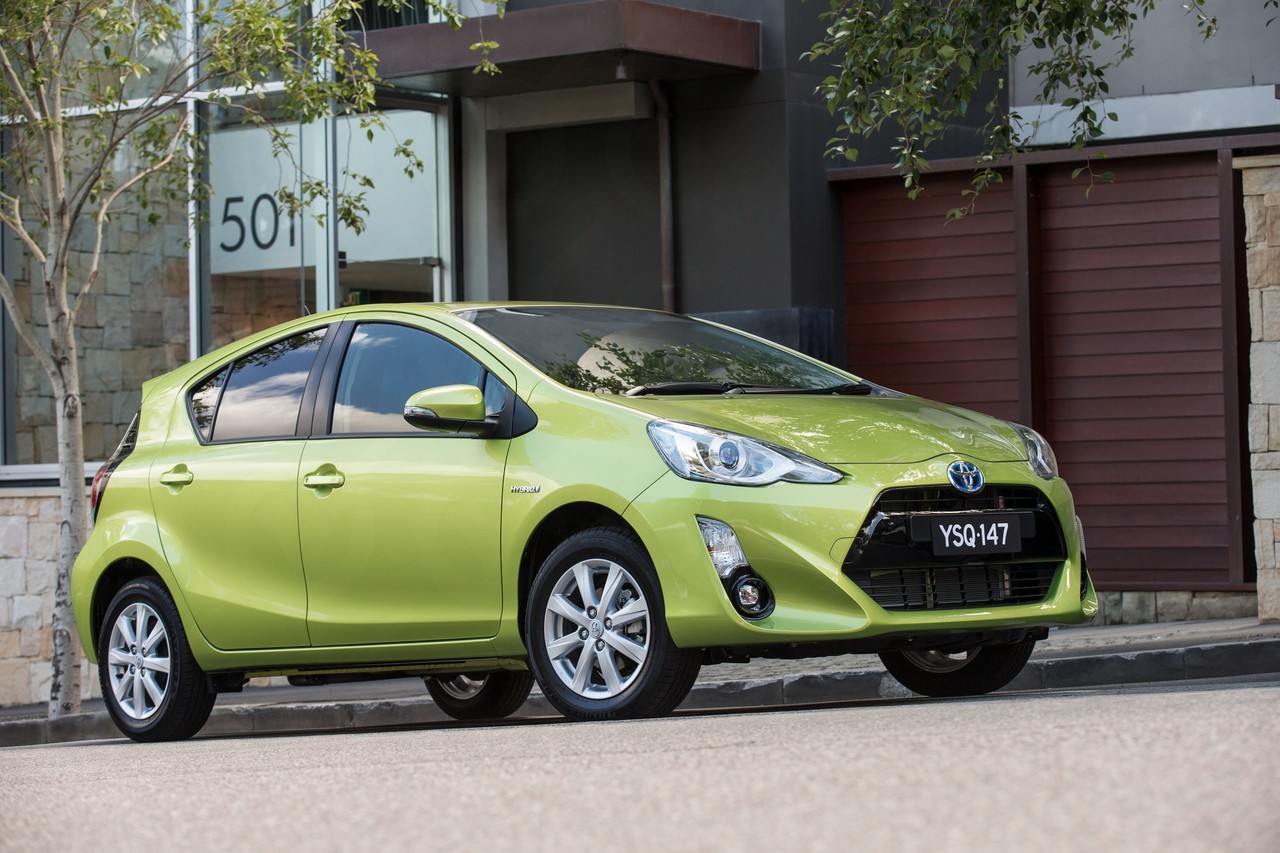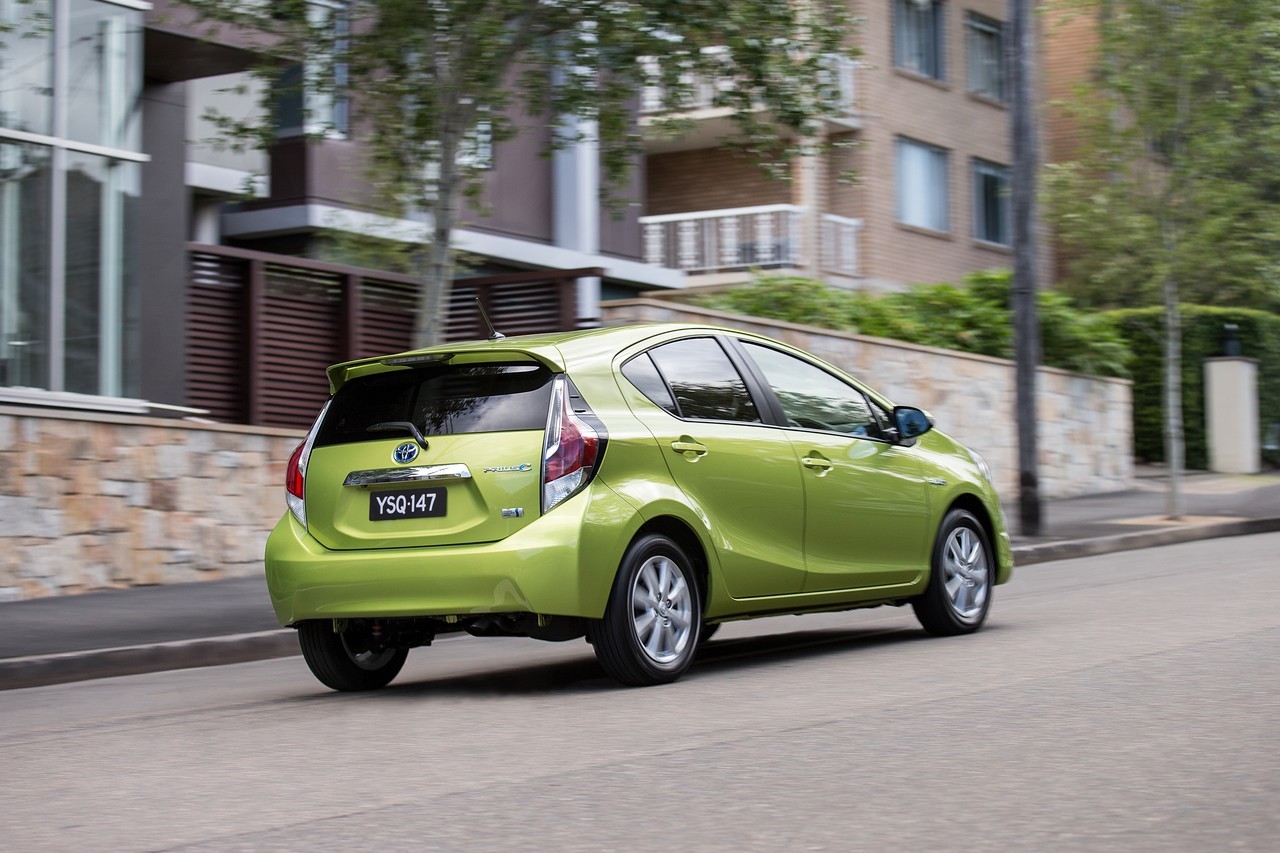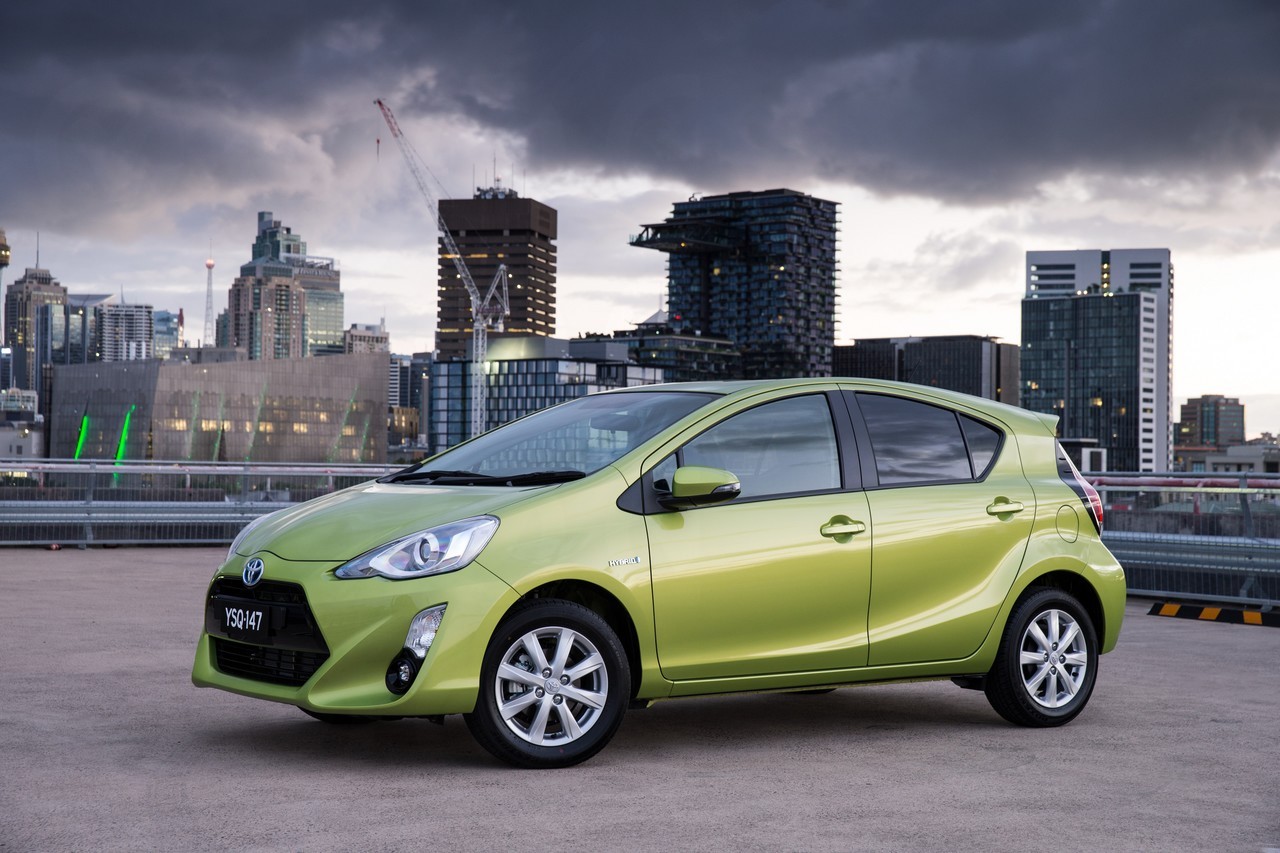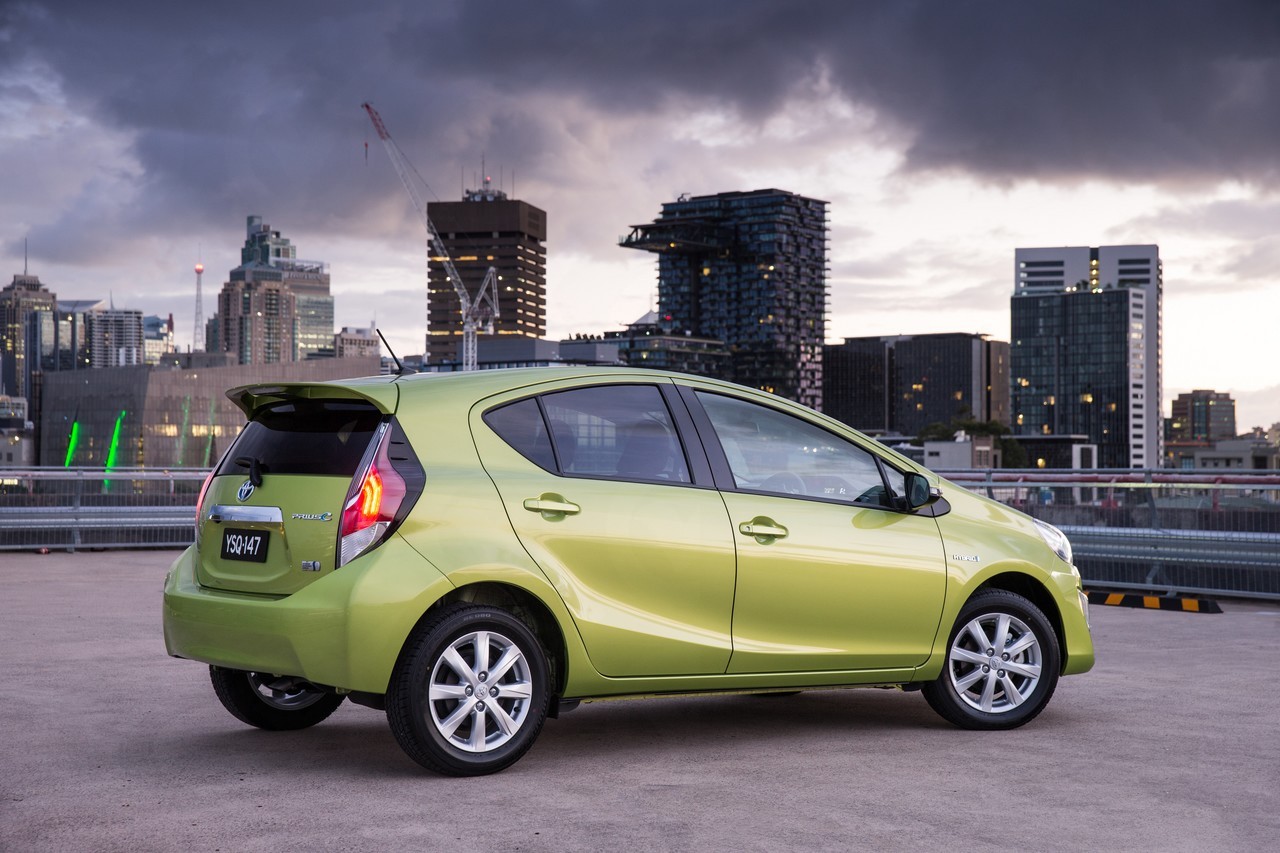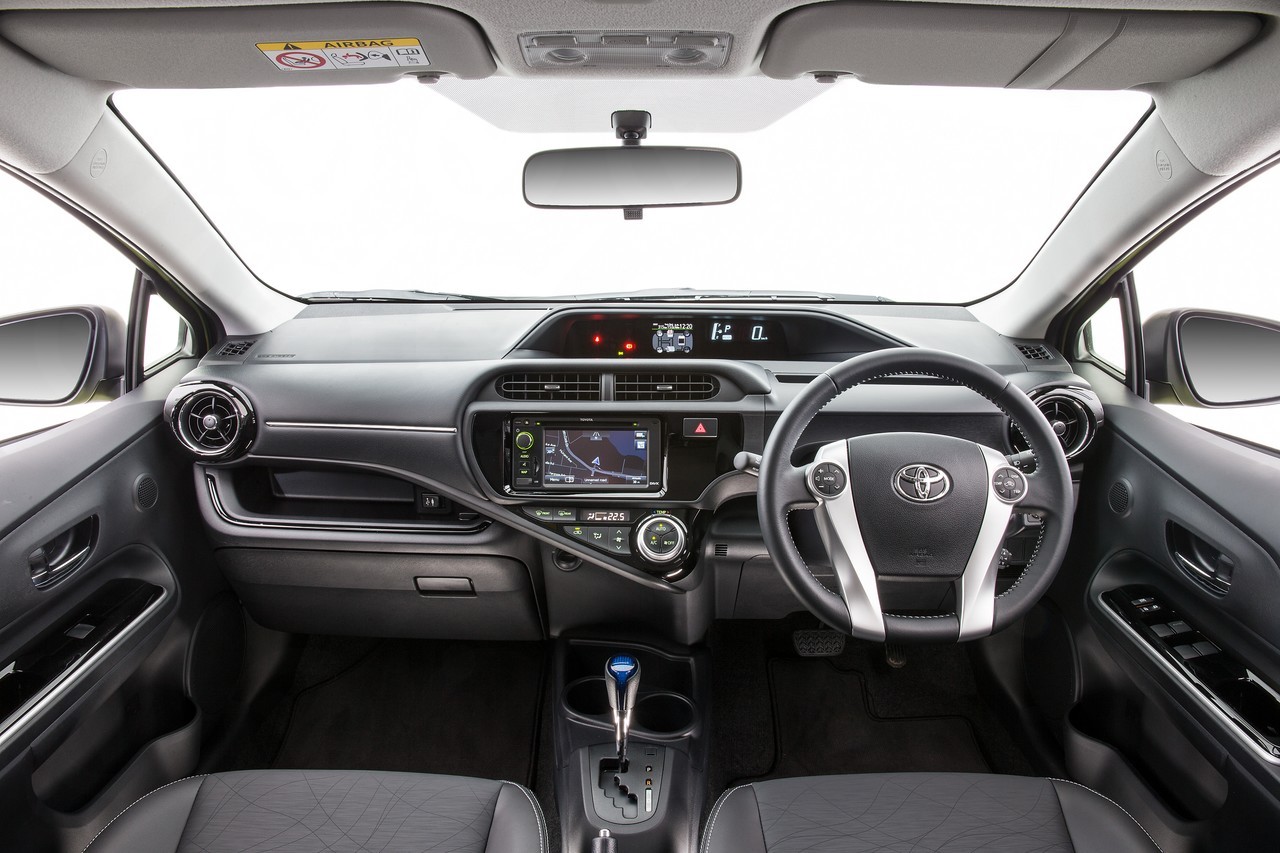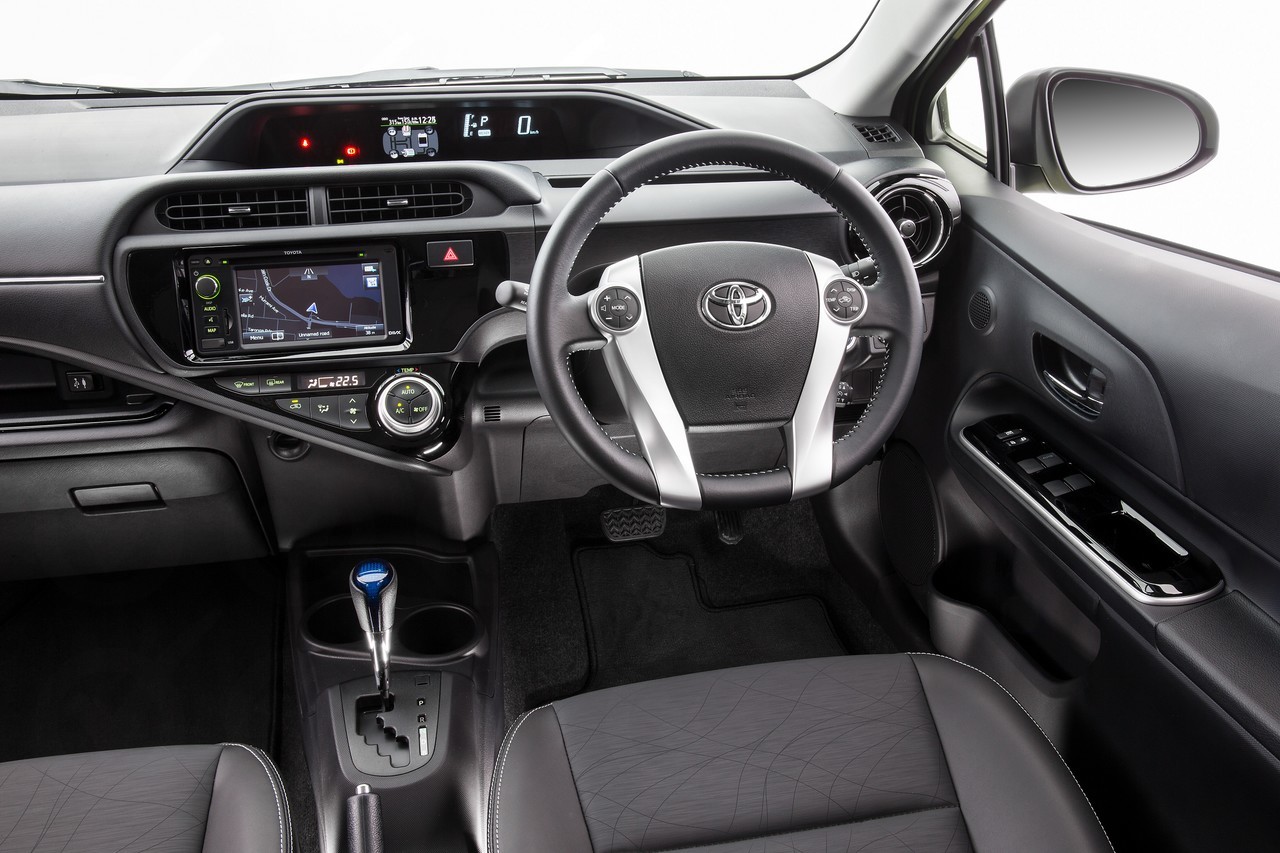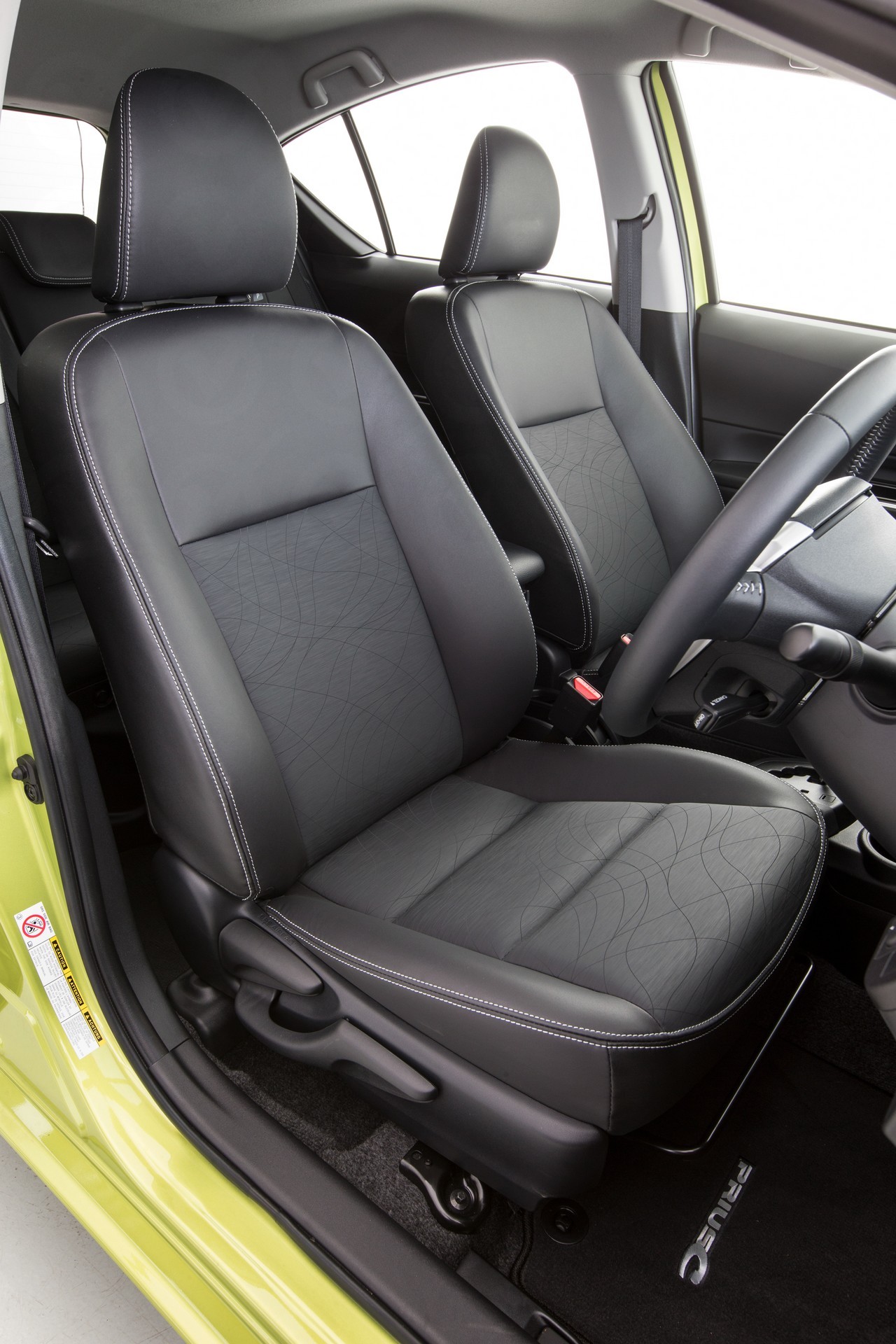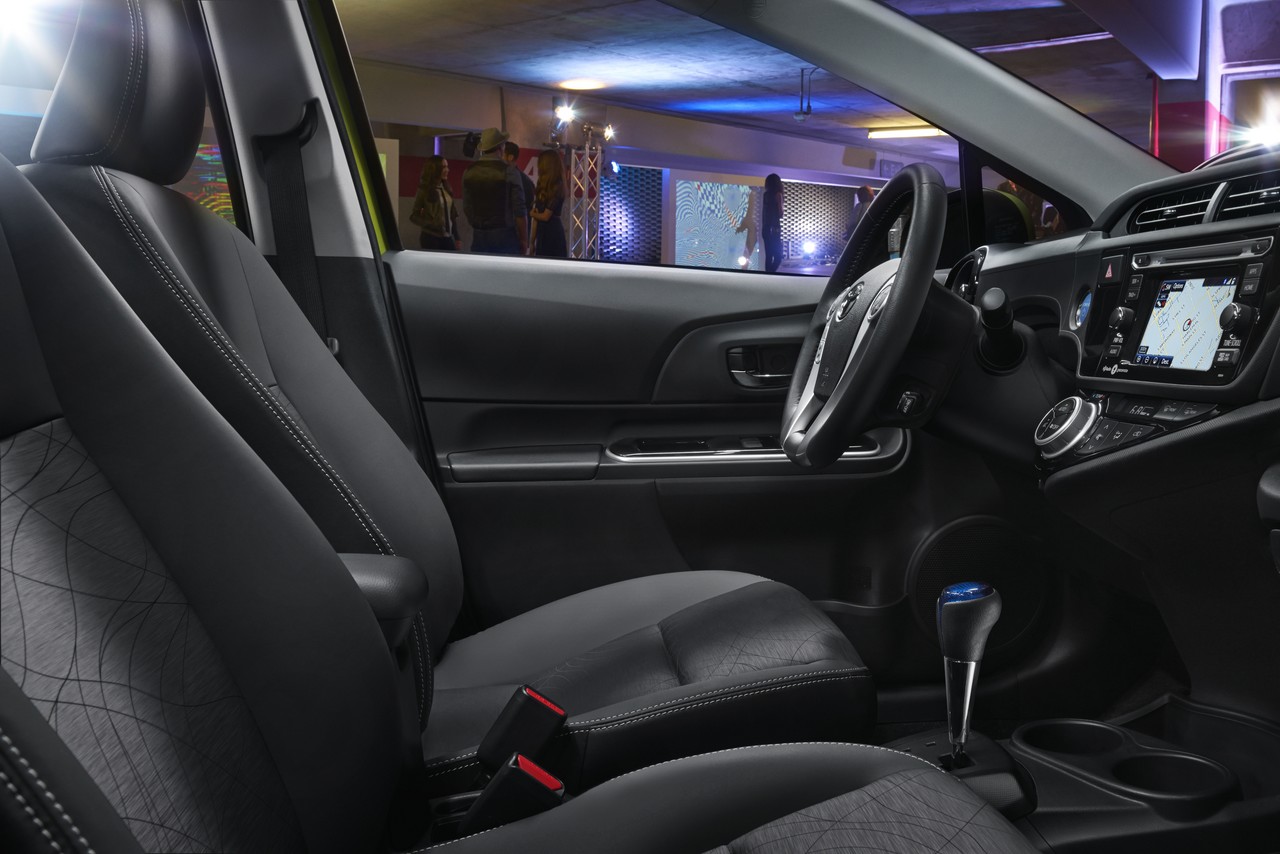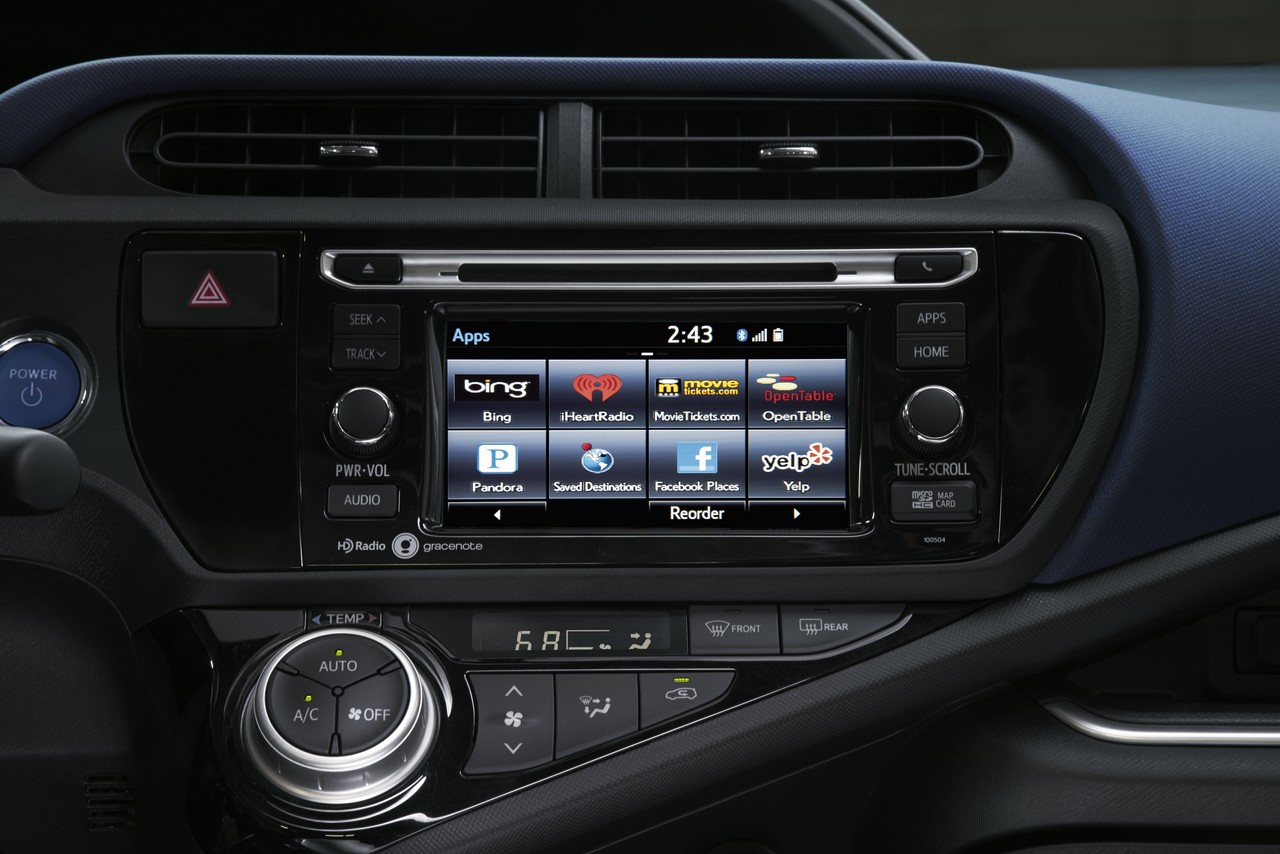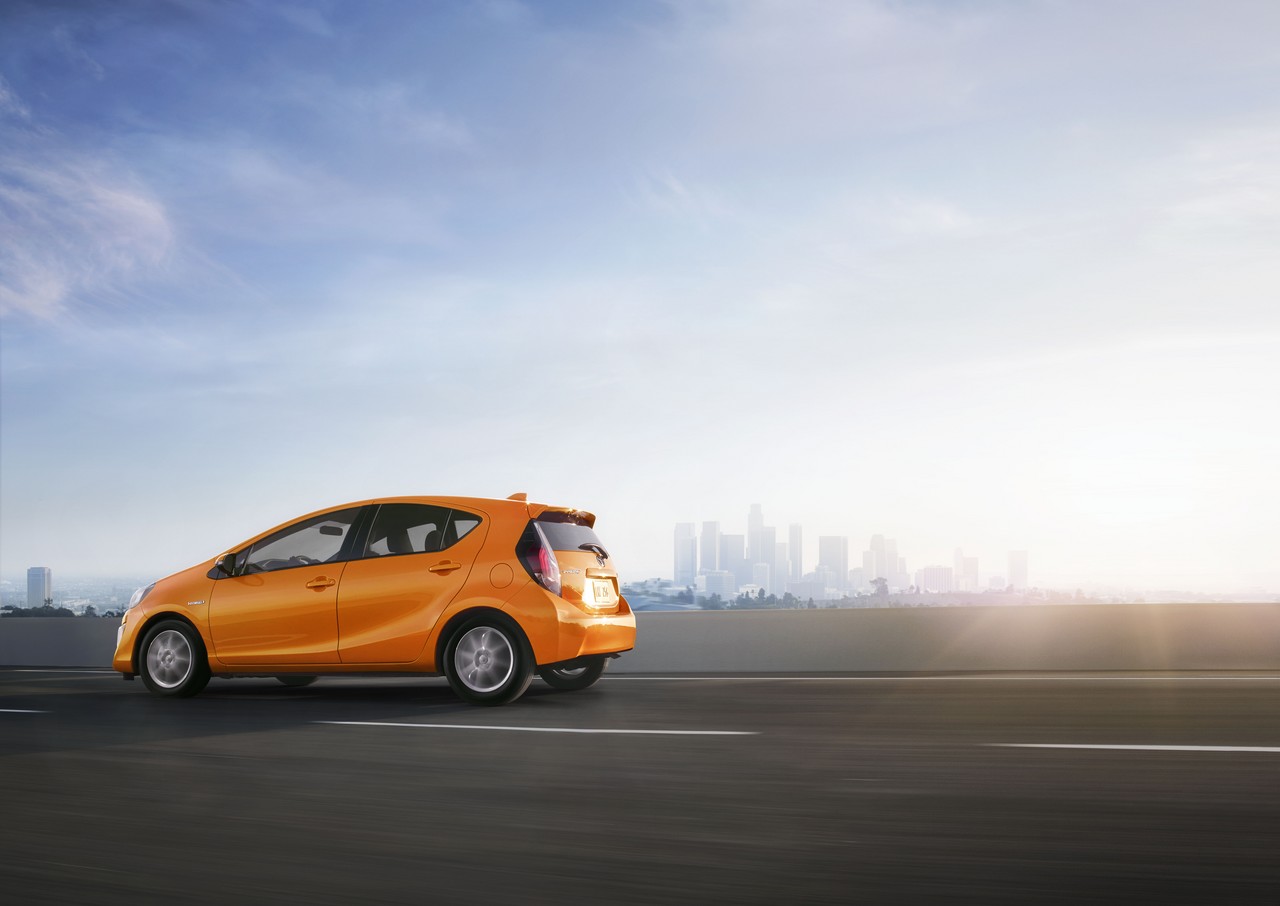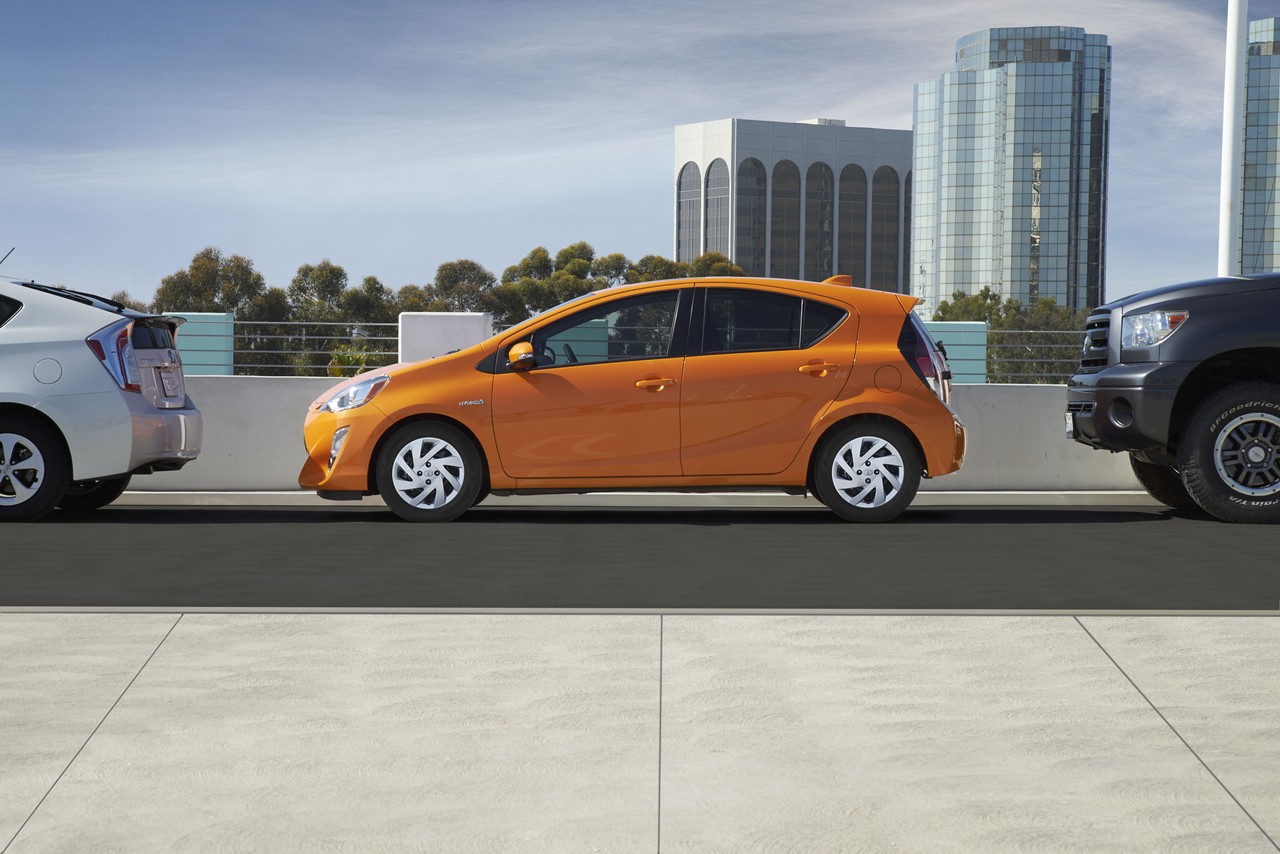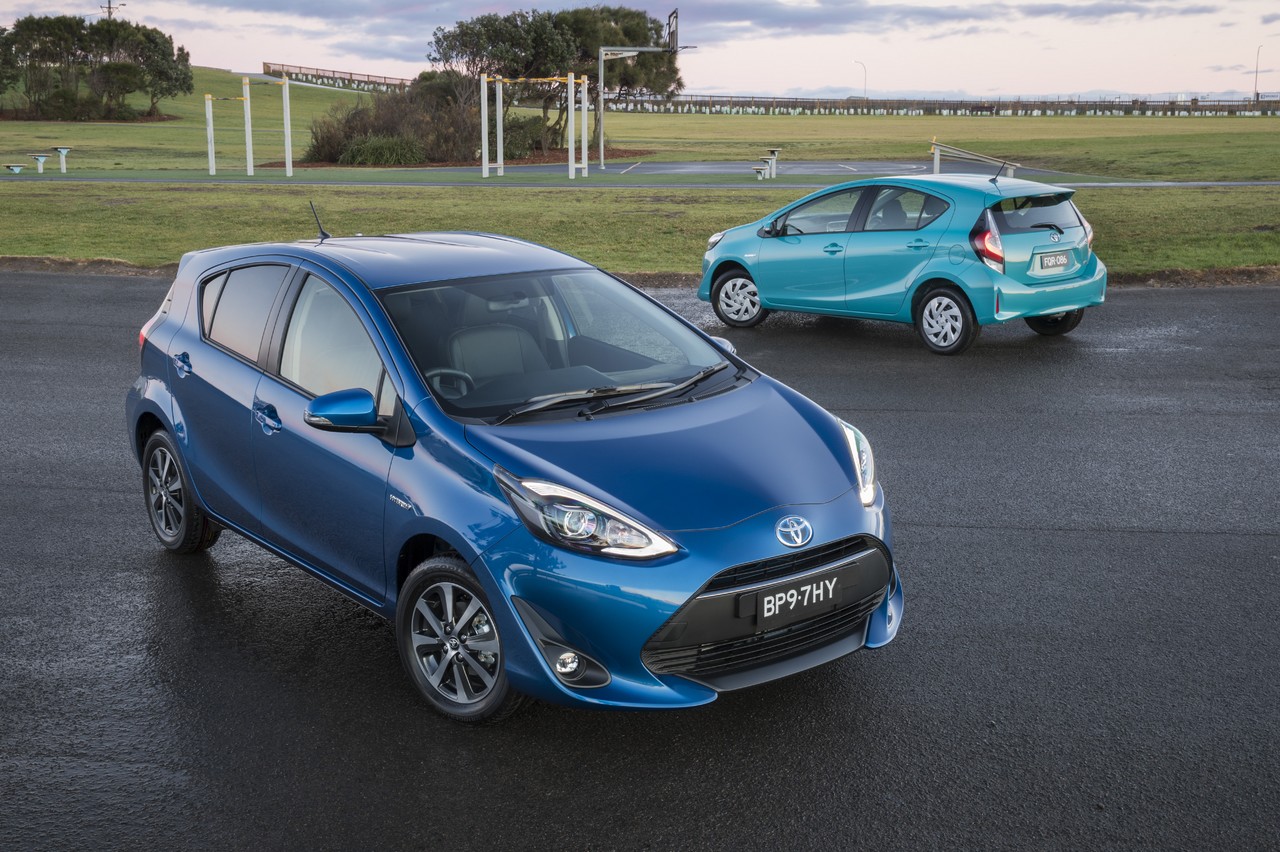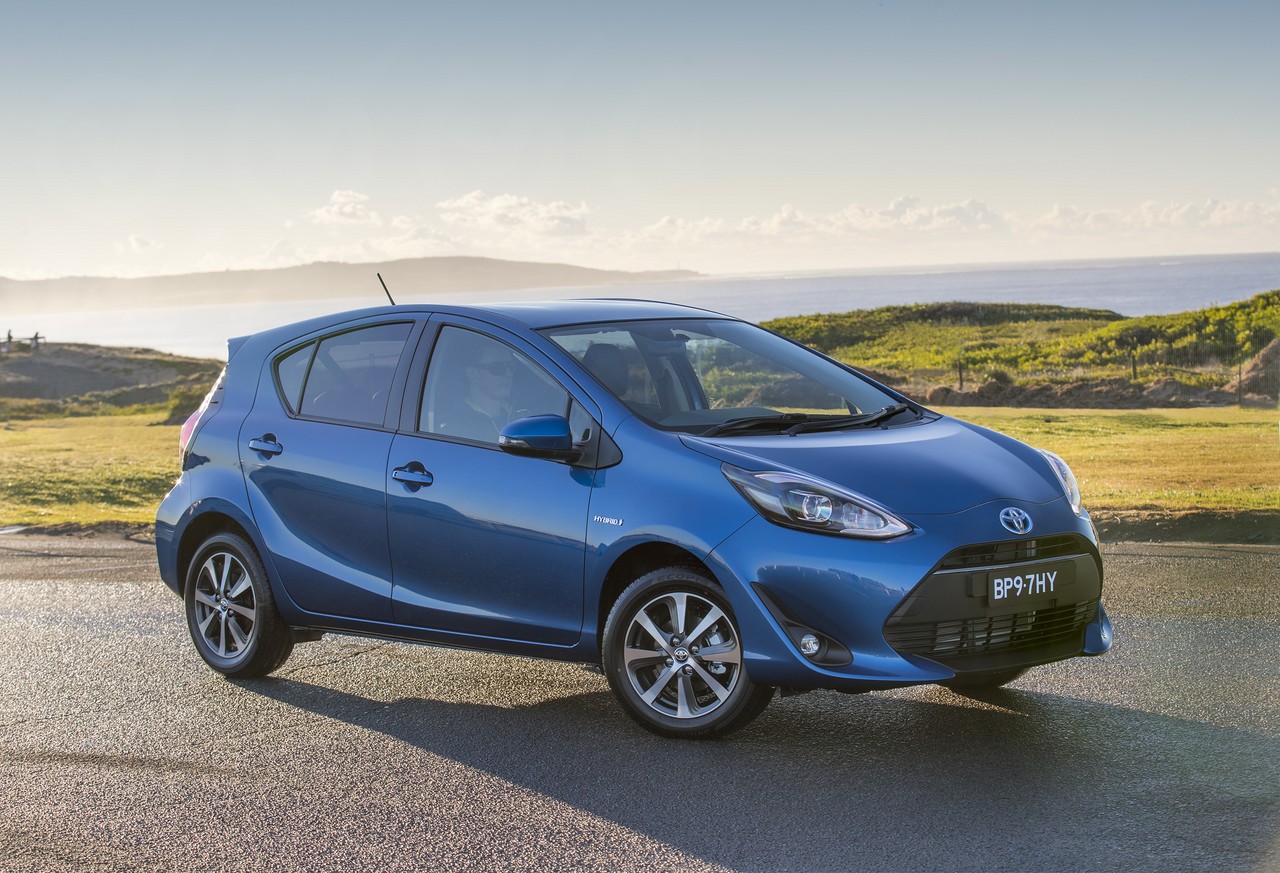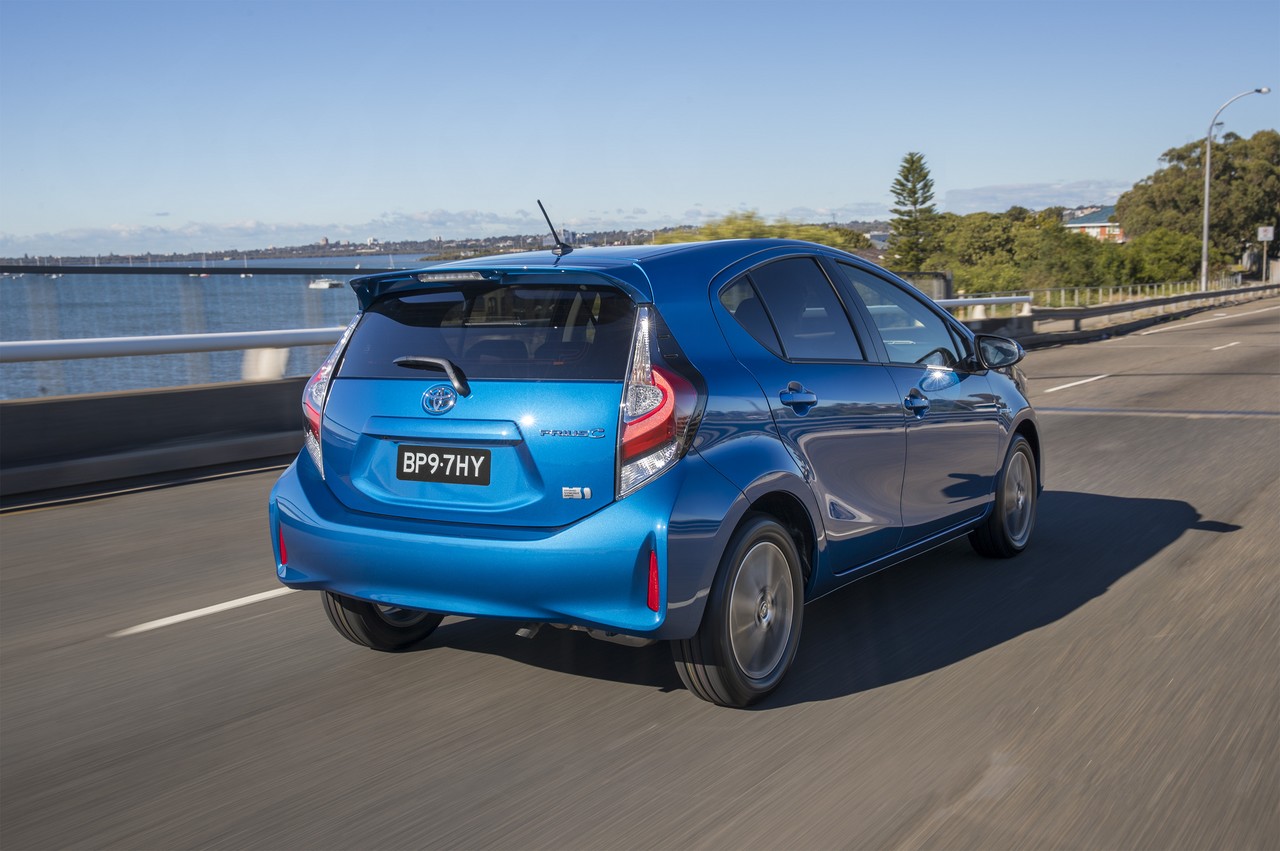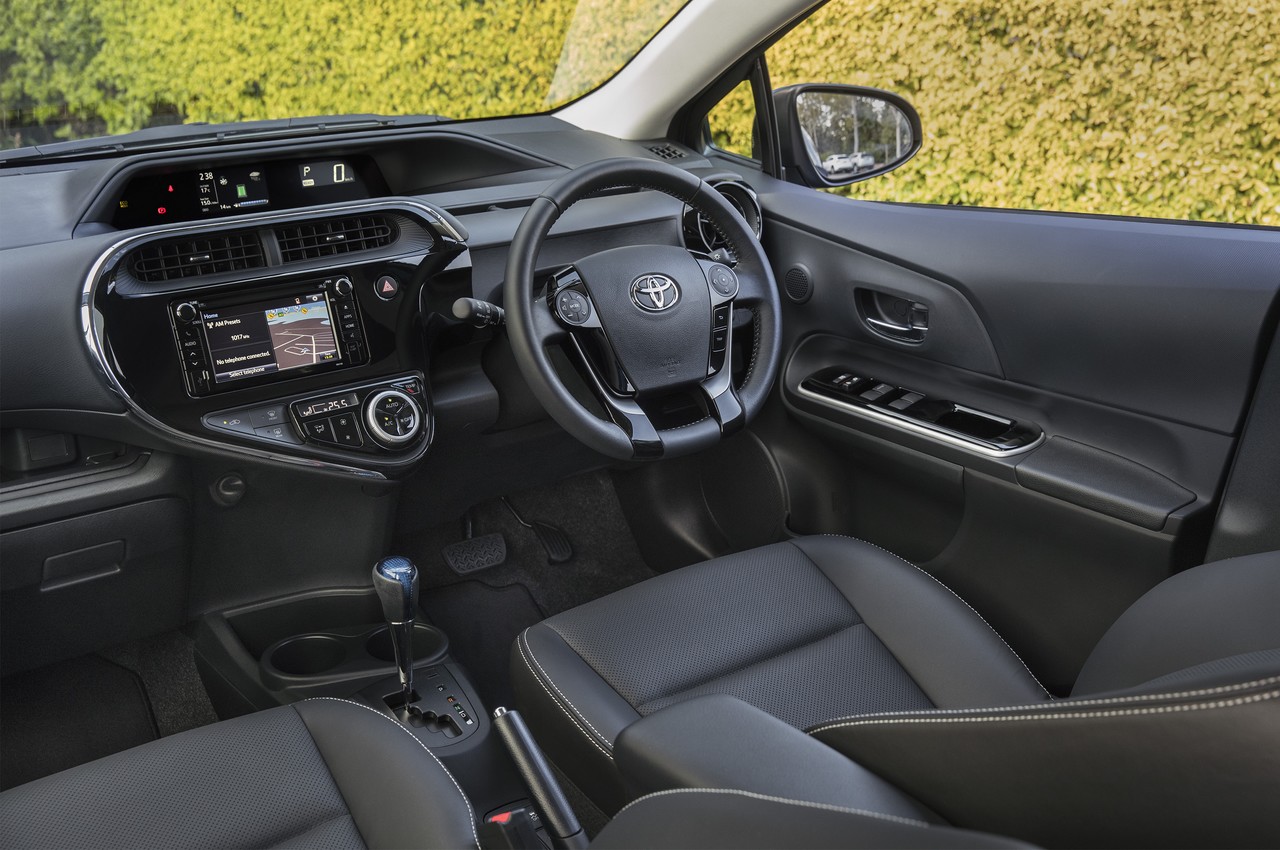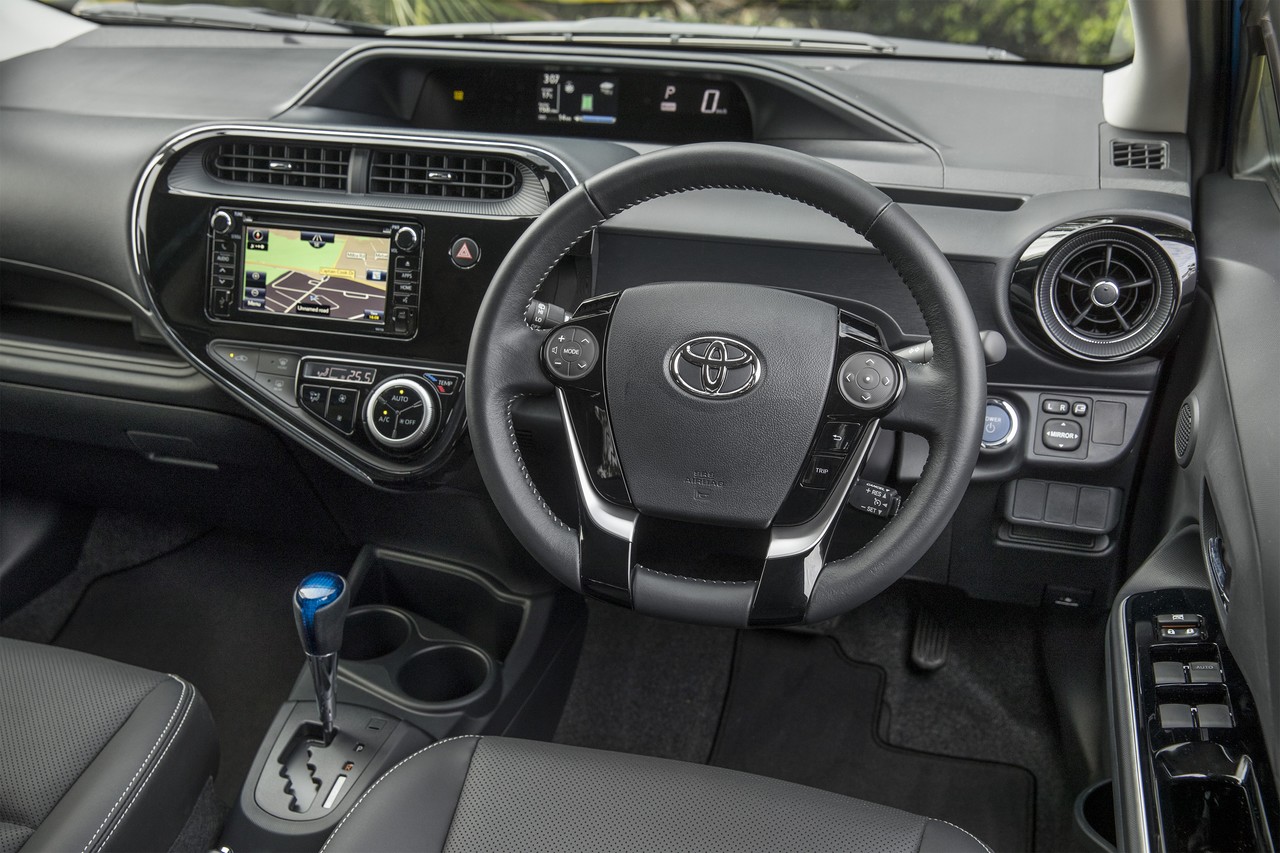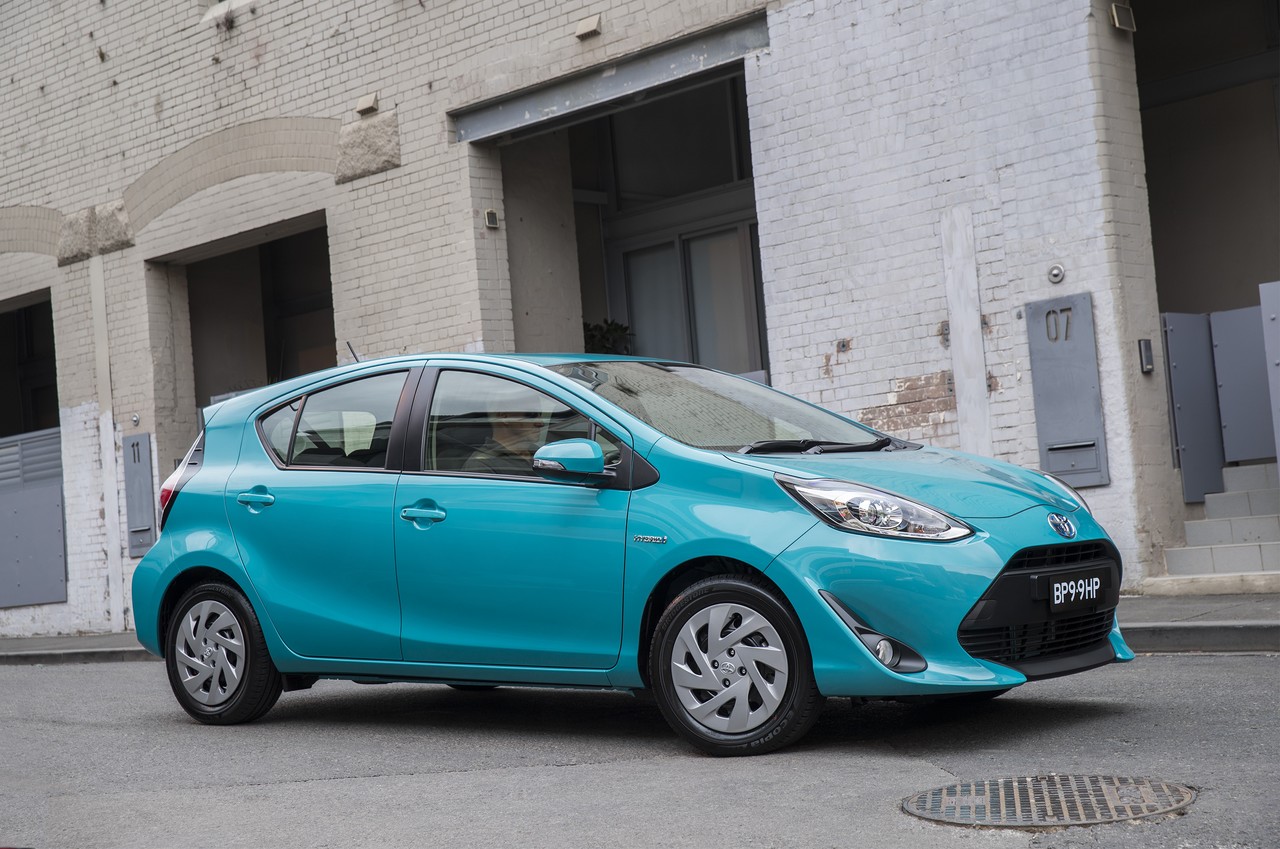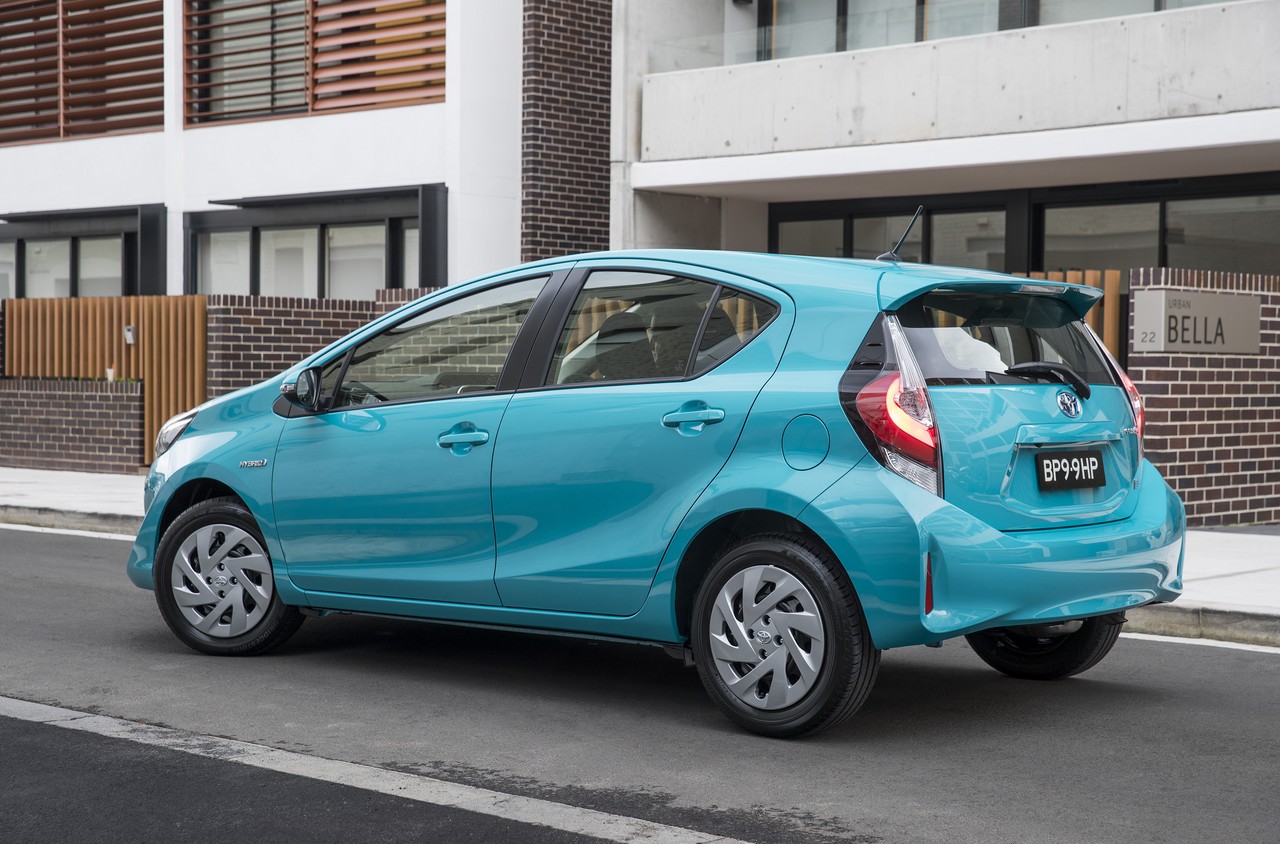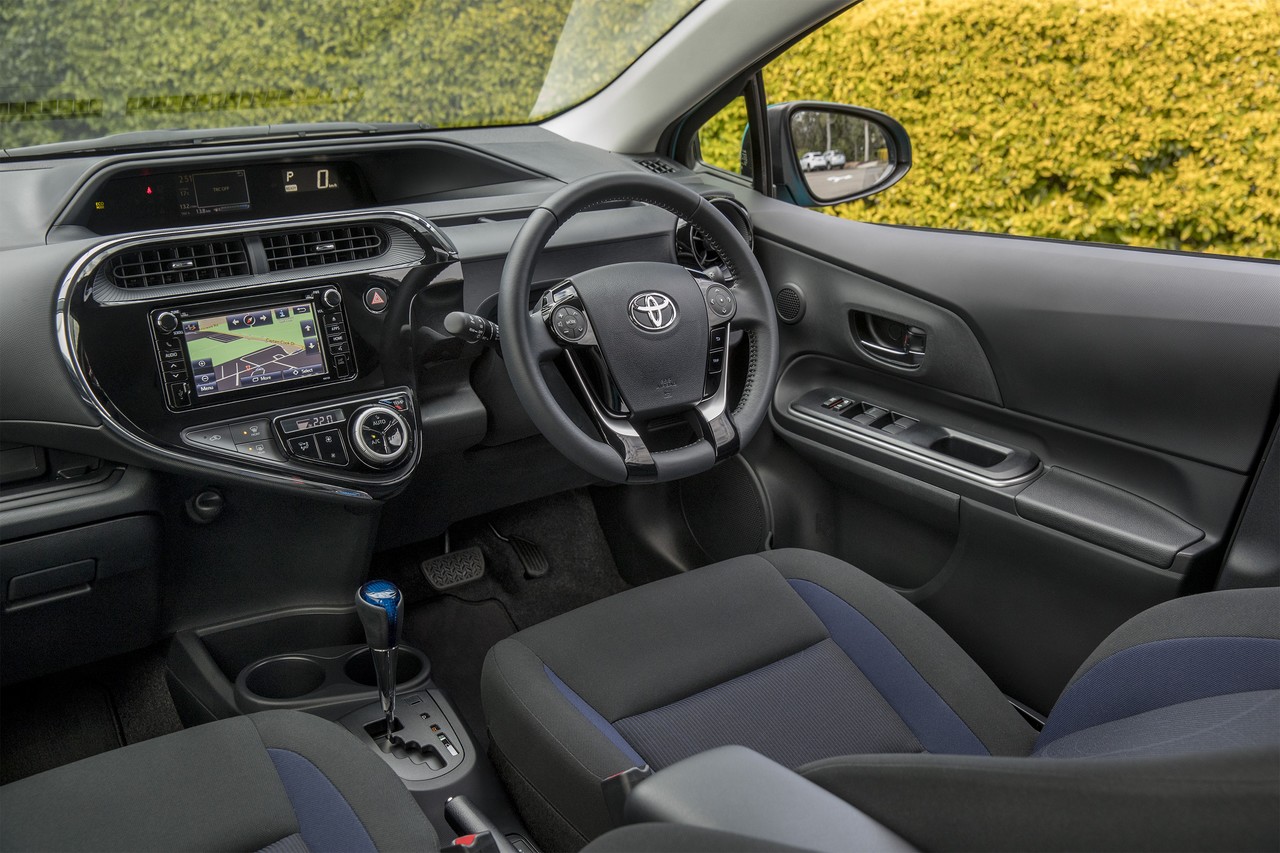
- Fuel-efficient and refined hybrid powertrain
- Good occupant space
- Comfortable front seats
- Small turning circle
- Suspension lacks compliance, upset by bigger bumps
- Dynamics fall well short of Mazda DE Mazda2 and Ford Mk.6 Fiesta
- Droning noise from CVT under acceleration
- Hard, dull grey interior plastics
- Significant retail price premium for hybrid powertrain
Review: Toyota NHP10.I Prius c (2012-14)
Overview
Released in March 2012, the Toyota NHP10 Series I (NHP10.I) Prius c was a light, five-door hatchback with a hybrid powertrain. Manufactured in Japan, the Prius c was powered by a 1.5-litre four-cylinder petrol engine and a permanent magnet AC electric motor which drew power from nickel-metal hydride batteries. Furthermore, power was directed to the front wheels via a continuously variable transmission.
1NZ-FXE engine and electric motor
The 1.5-litre 1NZ-FXE Atkinson-cycle four-cylinder petrol engine had an aluminium block and cylinder head, double overhead camshafts, four valves per cylinder, variable intake valve timing (Toyota’s ‘VVT-i’), and a compression ratio of 13.4:1. Furthermore, the 45 kW synchronous AC drive motor used a step-up inverter to convert DC battery power to AC and increase the 144 volt battery voltage to 520 volts.
The Prius c had three driving modes: ‘Normal’, ‘EV’ (for electric power over a range of up to 2 km and at speeds under 40 km/h) and ‘ECO’ (regulating the air conditioner and throttle control system for maximum economy). When stationary or coasting, the petrol engine would switch off and almost seamlessly restart when required.
| Details | Trans. | Peak power | Peak torque | |
|---|---|---|---|---|
| Petrol engine | 1.5-litre Atkinson cycle petrol I4 (1NZ-FXE) | CVT | 54 kW at 4800 rpm | 111 Nm at 4000 rpm |
| Electric motor | 520 volt synchronous AC drive motor | 45 kW | 169 Nm | |
| Combined | 74 kW | N/A |
Dimensions and body
Based on an extended XP130 Yaris platform, the Toyota Prius c was – relative to the Yaris – 110 mm longer (at 3995 mm), the same width (1695 mm), 55 mm lower (1455 mm) and had a 40 mm longer wheelbase (2550 mm). For the Prius c, however, the battery and fuel tank were both positioned beneath the rear seat.
Suspension and steering
Like the XP130 Yaris, the Prius c had MacPherson strut front suspension with L-arms, a torsion beam rear axle and electric power-assisted steering.
Safety equipment
Standard safety equipment for the Toyota Prius c included dual front airbags, a driver’s knee airbag, front side airbags, full-length curtain airbags (i.e. for front and rear occupants), ABS, electronic brake force distribution, brake assist, electronic stability control, traction control and front seatbelts with pretensioners and load limiters.
Brakes
The Toyota Prius c had 255 mm by 22 mm ventilated front disc brakes with sliding calipers and drum rear brakes.
ANCAP crash testing
In ANCAP crash testing , the Toyota Prius C received a five star adult occupant protection rating with a score of 34.38 out of 37. In the offset crash, occupant protection was generally rated as good, though protection of the driver’s and front passenger’s chests were rated as marginal and acceptable, respectively. In the offset crash test, protection of the driver’s chest was also rated as acceptable (i.e. a slight risk of serious injury).
Features: Prius c and i-Tech
Standard features for the Toyota Prius c included 15-inch steel wheels, a six speaker sound system with a CD player, MP3-compatibility, auxiliary inputs (3.5 mm/USB/iPod), Bluetooth audio streaming and a 6.1-inch touch-screen display, air conditioning, cruise control, front fog lights, a reversing camera, Bluetooth mobile phone connectivity, 60/40 split and folding rear seats, steering wheel audio controls, remote central locking, power windows and mirrors, tilt and telescopic steering wheel adjustment, a 12 volt power outlet, trip computer and an immobiliser.
The Toyota Prius c i-Tech was further equipped with alloy wheels, satellite navigation with live traffic updates, premium seat coverings, self-levelling LED headlights with washers, power retracting mirrors and rear privacy glass. Aside from its alloy wheels, the i-Tech could also be identified by its larger rear spoiler.
Brochure
Related links
Toyota NHP10.II Prius c (2015-17)
Overview
Released in Australia in February 2015, the Toyota NHP10 Series II (NHP10.II) Prius c could be identified by its hexagonal front grille, reshaped headlights, greater sculpting around the front fog lights and new LED tail-lights. The standard Prius c also received new wheel covers.
Inside, the centre stack was revised with larger switches and a multi-purpose dial for the air conditioning. The interior colour schemes featured darker hues, while the standard Prius c had black seat trim with dark blue facings. The Prius c i-Tech received soft-touch dash cladding, dark-grey seats with silver stitching, and silver stitching for the steering wheel.
For improved ride comfort, steering response, stability and cornering ability, the following changes were made:
- Retuned front and rear shock absorbers;
- Additional spot welds in the rear-wheel housings for a stiffer body;
- Stronger MacPherson strut bearings for more linear steering feel from initial turn-in; and,
- Revised front rebound stoppers for a more natural forward-tiling posture when cornering.
| Details | Trans. | Peak power | Peak torque | |
|---|---|---|---|---|
| Petrol engine | 1.5-litre Atkinson cycle petrol I4 (1NZ-FXE) |
CVT | 54 kW at 4800 rpm | 111 Nm at 4000 rpm |
| Electric motor | 520 volt synchronous AC drive motor | 45 kW | 169 Nm | |
| Combined | 74 kW | N/A |
Features
Standard features for the NHP10.II Prius c were unchanged.
Brochure
Toyota NHP10.III Prius c (2017-19)
Overview
The Toyota NHP10.III Prius c was released in Australia in August 2017. Visually, the NHP10.III Prius c could be identified by its larger grille (with a chrome-plated bar for the Prius c i-Tech), new front bumper, bonnet, fenders and LED rear combination lamps. As part of the update, the front mask was extended by 40 mm and the rear spoiler was extended by 15 mm. The Prius c i-Tech was also distinguished by its alloy wheels with machine-finished graphics and painted ripple-shaped sections.
Inside, the Toyota NHP10.III Prius c was fitted with a new black steering wheel with piano black and silver highlights, a revised HVAC control panel with LCD display functions, soft-touch materials for trays in the instrument panel and centre console, and a new finish for the instrument panel. The NHP10.III Prius c also had a larger 4.2-inch multi-information display (MID) within the instrument cluster (previously 3.5-inch); the standard Prius c was also fitted with the same steering wheel as the Prius c i-Tech to operate the MID.
To increase body rigidity, the NHP10.III Prius c had larger and stiffer lower-rear panels and additional spot welds for the rear-wheel housings.
| Details | Trans. | Peak power | Peak torque | |
|---|---|---|---|---|
| Petrol engine | 1.5-litre Atkinson cycle petrol I4 (1NZ-FXE) |
CVT | 54 kW at 4800 rpm | 111 Nm at 4000 rpm |
| Electric motor | 520 volt synchronous AC drive motor | 45 kW | 169 Nm | |
| Combined | 74 kW | N/A |
Features
Standard features for the Toyota NHP10.III Prius c were extended to include satellite navigation with SUNA live-traffic updates (previously limited to the Prius c i-Tech) and the ‘Toyota Link’ connected mobility system which, when connected to a compatible smartphone, provided access to apps that could help the driver find a destination, weather information and roadside assistance.
To reduce mass, the NHP10.III Prius c and Prius c i-Tech were fitted with a temporary spare wheel.
Related links
- Toyota PressRoom: Toyota Adds Value With Prius C Upgrade (August 2017)
- Toyota Australia: Toyota Prius c
- Wikipedia.org: Toyota NHP10 Prius c
